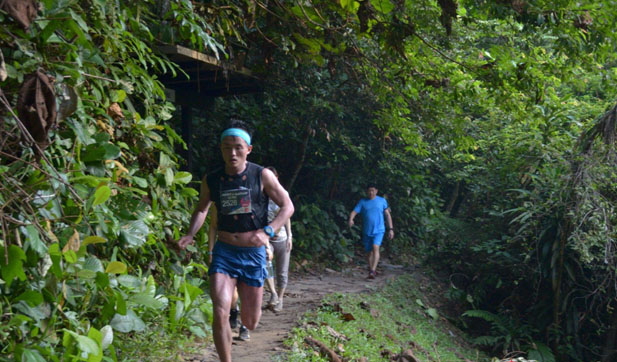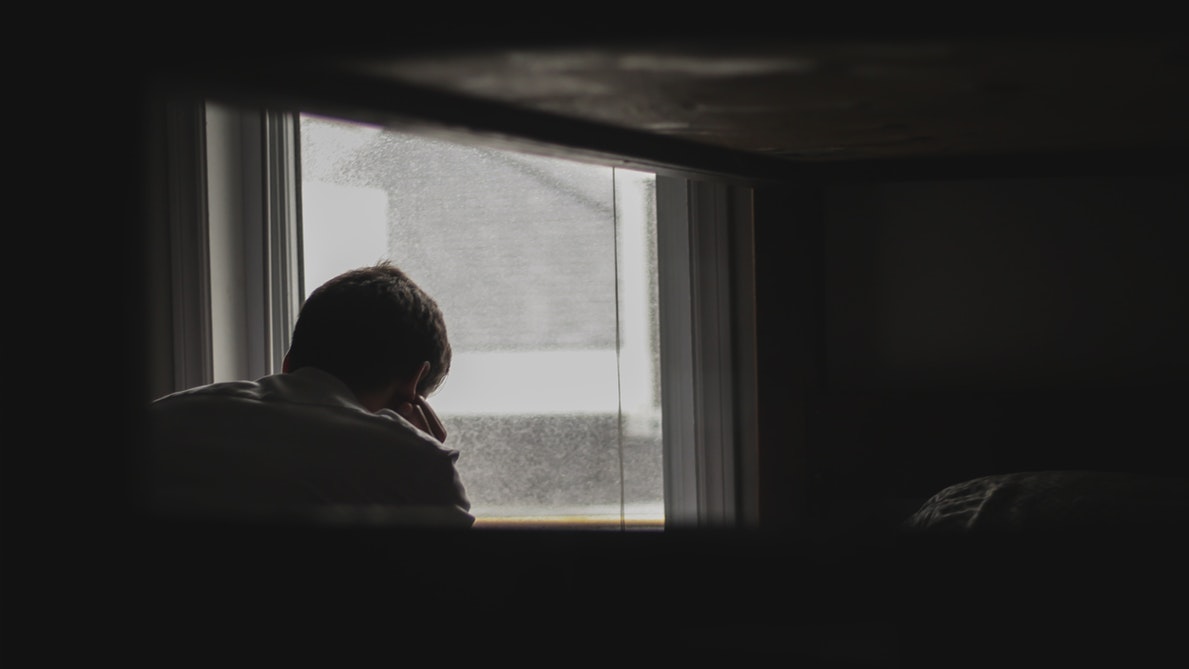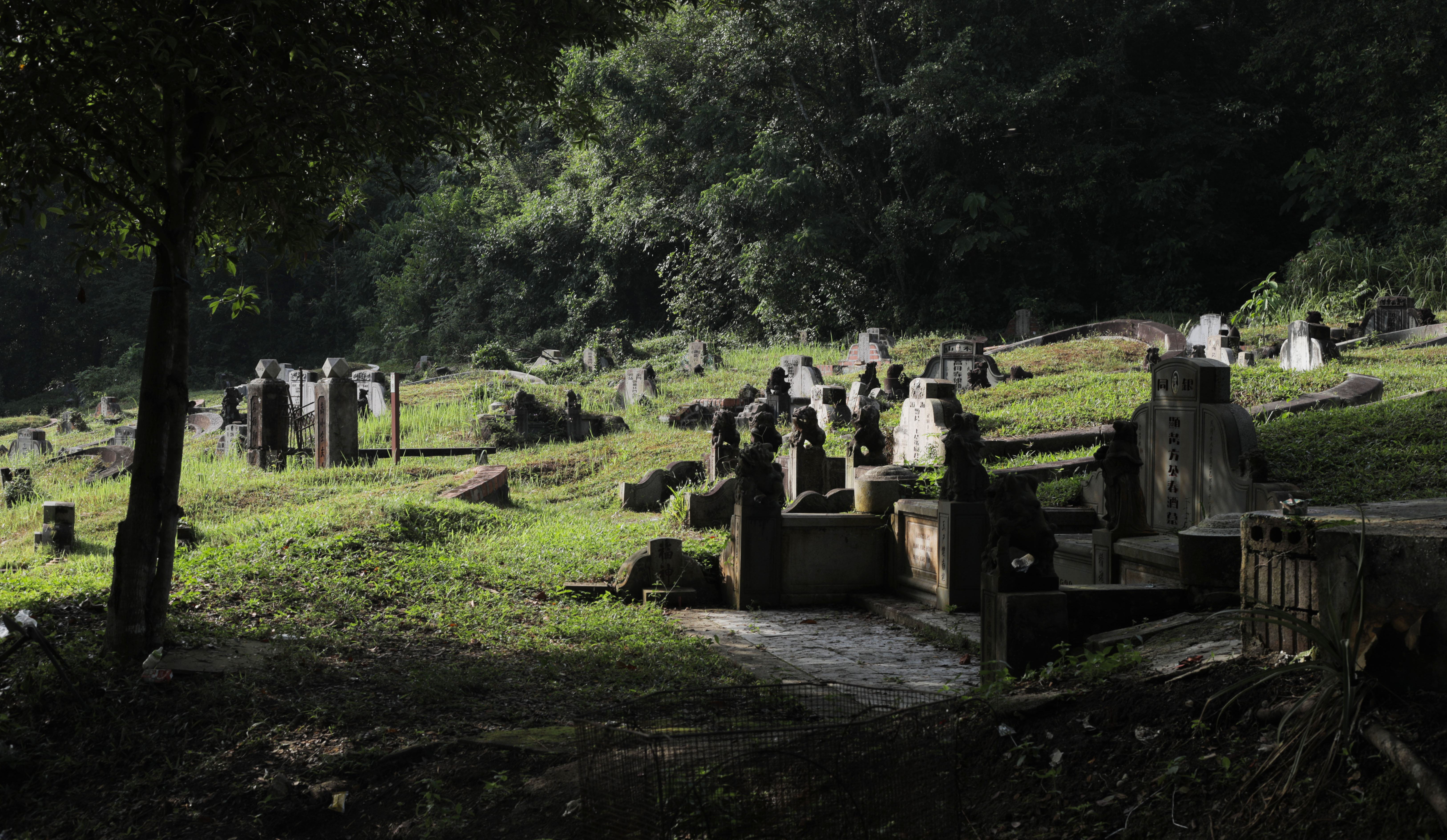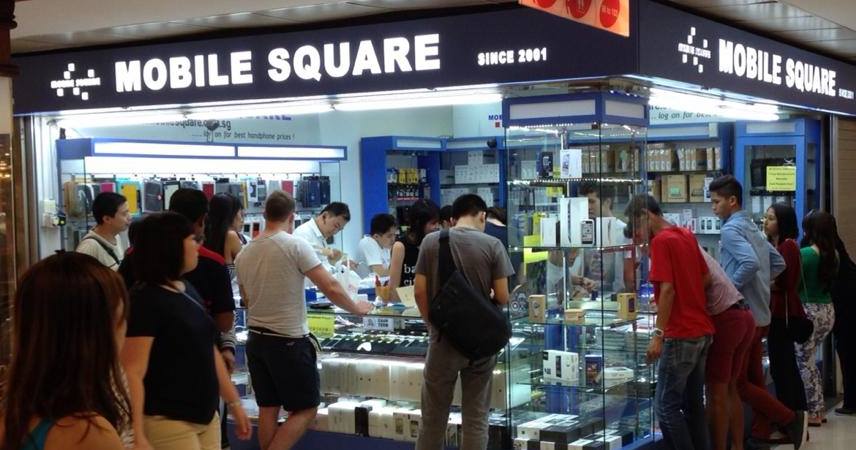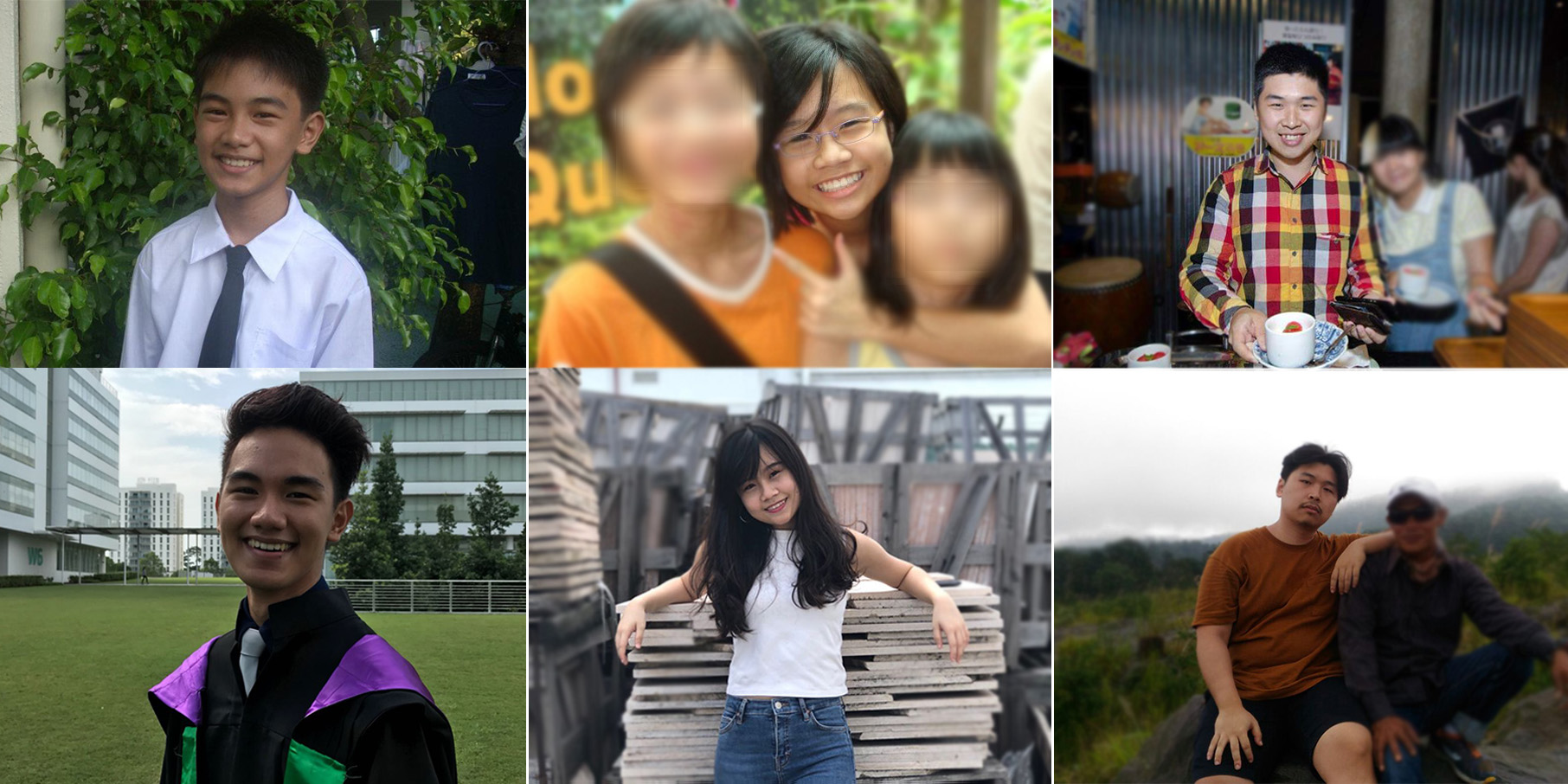They say that you are a reflection of the company you keep. For Asher, who had his brush with being “a little bit delinquent” in his secondary school days, this couldn’t be more true.
“You know lah, like most boys, I had those days where I was a ‘wannabe <a href=" (gangster)’,” Asher jested. Having a best friend with “a very beng perspective” and whose friends and family were all equally ‘beng’ rubbed off of him. He was on the path towards a similar lifestyle at that point. Those were the days where he would get into a lot of fights, just because.
Growing up in a single-parent household, things weren’t as simple back at home either. Due to conflicts he had with his mother, the animosity between them grew. Things escalated to the point where he decided to leave home. He lived with a friend, taking on multiple part-time jobs to cover his own school fees and personal expenses.
He was just a young polytechnic student at that point.
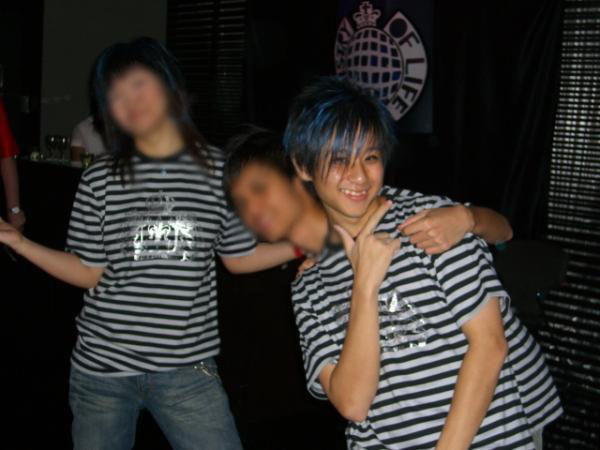
Image Credit: Asher Low
Then, he started to struggle with body dysmorphia: “I felt like I was ugly and that I was never good enough.” This feeling of inadequacy stuck with him well into his 20s and over time, developed into full-blown depression.
The turbulent emotions from dealing with the transitions in his life, coupled with the complications he faced with a dysfunctional family, led Asher down the path of self-harm. He had even attempted to take his own life as a way out.
“I was actually really good at hiding it—my depression. The ones closest to me know, but it still came as a shock when they know that I hurt myself, especially for my mentors.”
It didn’t help that socially, it was also “not cool to have mental health problems, and not cool to get panic attacks.”
Fortunately, Asher’s personal anchor with his religion helped him out of such a lifestyle that he was on track for: “what really did save me was when I saw how my friends were taking drugs and all, and I saw the kind of lifestyle they were falling into.”
In church, he was given opportunities to work with youth-in-need, which opened up his eyes to social work.
“I was also blessed with mentors, friends, and a community that cared and believed in me. Today I want to give the struggling youths out there the same opportunities that were created for me.”
With that motivation, Asher’s work with youths later culminated in Limitless—a Voluntary Welfare Organisation (VWO) he started.
Running Limitless
“Imagine where will you be if all your boundaries are taken away. What can you achieve?”
Asher pitched, when I asked about how Limitless came about.
Together with his partner and a couple of like-minded friends, the initial concept of Project Imagine went through several changes before Limitless came to be today.
“We founded with the main mission of empowering youths, regardless of background, circumstances, or history, to fulfill their potential.”
Three years on today, the team has grown to include 40 volunteers with about 15 to 20 of them supporting Limitless with administration work, design, social media, web platforms, therapy and counselling work, and events.
Mental health is increasingly emphasised and not only do we hear of more people suffering from mental health disorders today, there are also increasingly younger Singaporeans seeking help for mental health issues.
But Why Is Our Younger Generation Facing Suffering?
Having gone through a difficult rite of passage himself, Asher explained that a lot of youths struggle with mental health issues because of the changes they face in their transition years: “It is where they are [susceptible to feeling lost and confused.]”
This is where Limitless steps in with various therapy work, befriending and counselling services, and a support helpline to provide a sort of ‘safe haven’ for youths to share their troubles. For youths who are born with disadvantaged circumstances especially, giving them that little boost goes a long way in empowering them to step out of their comfort zone and to fulfill their full potential.
“Say a youth who can’t focus in school because he has bipolar disorder and struggles with thoughts of killing himself. Or the youth who comes from a poor family and when she went to primary one, everyone else could do math already but she can’t because they went to preschool and she didn’t, and that caused her to be behind everyone else all the way into secondary school. So, we see our work as that of bridging that gap.”
Social programmes like dance, music and sport programmes are also avenues Limitless provides to facilitate their aim for the youths they serve.

One of the climbing programmes organised by Limitless
Image Credit: Asher Low
A snippet of another programme
GIF credit: Limitless
With increasing focus on outreach and education on mental health, Limitless has also partnered with a network of organisations and companies to provide opportunities like subsidised tuition, internship, or even work for young adults.
It’s A Battle, But One Worth Fighting For
Although, running a VWO (charity) in Singapore is in itself the greatest challenge.
“To be honest for the first couple of years, the directors, including myself, were the primary [people funding the organisation]. Meaning I didn’t take a salary, and instead gave to the organisation whenever it was in the red. But it’s gotten better as more people hear about the work that we do.”
Today some of the funds that support their work include the Tote Board Shared Gifting Circle for Children and Youth Mental Health, the National Youth Fund, and private family led funds such as the Zen Dylan Koh Fund—which has been covered in a heartbreaking feature by Straits Times earlier this year.
For Asher, who finds privilege in being able to be surrounded by people in the ‘helping professions’, like counsellors, running Limitless is for himself as much as it is for the youths he champions for.
“When I meet young people who grew up with similar struggles to myself. Those who come from single parent or broken homes, and those who struggle with depression or come in telling me they hate themselves. I see myself in them.”
Although, working in such a social and service oriented industry still takes its toll on him. As someone who relates on a personal level with the many struggles his clients and youths go through, he has to keep steadfast to his vision. This, on top of having to sacrifice family time for work, and having to deal with problems of his own—his position makes it that much harder for him to share his problems freely.
However, he strongly believes that every youth have their own calling in life, regardless of circumstances, and all they need is the opportunity.
“These callings and destinies may right now be in the form of a dream, an aspiration, a strength, a passion, or quoting Marie Kondo: something that sparks joy in their life. I don’t want them to lose the opportunity to live out that potential.”
With a vision to continue advocating the concept of potential in youths, Asher hopes to train people to be able to stand through their struggles, and to be that friend to help others around call out the good in their life.
“If the youths get that support, a mentor, or opportunities in the most mouldable stage of their lives, I believe amazing things can happen. Because it happened for me.”
Also read: Paying It Forward: Why Volunteering During Chinese New Year Was More Valuable Than Any Angbao.
(All images used in header provided by Asher Low)
This article contains an image that some may find disturbing.
Running. This word, synonymous with everyone for a sports activity that requires a certain amount of endurance and physical capability. To me, it means so much more.
There is a love-hate relationship whenever it comes to sports in Singapore, especially running. People with busy lives would see it as an act of healthy living, and do it for the sake of keeping healthy and striking bucket lists off by completing a marathon once in their life. Those bordering on the edge of insanity do it for more than living; bragging rights, personal bests, medals, finisher tees and even podium positions.
For me? Running edges on irrationality and a particular quest. A quest to live. A quest to be better than who I am today, and what I was yesterday and many yesterdays that have passed.
My life
Growing up as a primary school student, I hated sports and any activity that required me to have a certain level of physical endurance. That resulted in my obesity and chubbiness at a young age.
When we're at that age, we are ignorant of things that happen beyond our scope of understanding. Things like cancer, life and death, and also sometimes, our future.
As I entered my teenage years, I started to become more self-conscious. I started to realise every change on my body, and was always wishing I looked a little bit more handsome than that guy who has all the girls at school swooning over.
Then, there was one particular change that made a huge impact on my life, even until now. ‘Cold sores’ and ‘white patches’ started appearing on my body, especially on my thighs, hips and back.
I initially thought these 'odd patches' were nothing more than puberty taking charge of my body, but I was so wrong.
Living in a body that wasn't living up to me
Those sores started to graduate into fungus-like plagues and scars on the majority of my thighs and hips. My skin started to flake and became overly sensitive and extremely dry—like the Sahara Desert. The white patches on my body multiplied faster than you can say cell division.

Following the advice of my aunt, I went to the doctors to find out what I really had.
After a few weeks of going back and forth with several consultations, blood tests and biopsies, I finally had a semblance of what I was suffering from.
I guessed my aunt thought I was too young to understand and kept it from me, passing it off as a severe form of psoriasis or ezcema and only wanted the best for me. I went through several sessions of phototherapy—a therapy that involves being in a chamber where UV lights penetrate your skin.
My skin seemed to get better with each session, but the side effects were obvious. I hated going to each and every session because it was troublesome to travel to after school. I was missing classes and couldn’t do the things I wanted to do like playing games and hanging out with my friends. I suffered from fatigue, migraines, and my skin started becoming extremely sensitive.
All of that happened while I was still just a teenage boy, and I thought nothing of it. I decided not to go ahead with the sessions as that took the life out of me. I brushed my condition off as something that would get better and disappear with age.
I continued to do what I love; I played hockey for the school and national teams, and did well enough in my O-levels to get into the polytechnic and course that I wanted, and life picked up for awhile.
I felt that life was only just beginning.
Exempted from NS—Am I a 'lower-class citizen'?
Polytechnic was a blast. I made friends who even till today, are the bestest ones I can ever ask for. I went through experiences that I will go through again in an instant if I can rewind time.
After graduation from polytechnic, I was preparing for my next stage of life—National Service. I had high hopes and expectations for myself; to serve the country I was born in and that has given me so many opportunities, and to also give back to my father who has sacrificed much for my well being.
The first hiccup occurred during the compulsory medical check up at CMPB (Central Manpower Base). The medical officer wanted to give me a PES D and go for further check-ups at a doctor to make sure that I can serve, but I refused and begged for him to give me a better PES status. Maybe it was my ego, or maybe pride, but I didn’t care about my skin condition. I just didn’t want to be judged as a person attempting to escape military service.
All was well, until the month before my enlistment date.
My mother being the worrywart she was, came to me in tears telling me to go back to the doctors as she didn’t want to see me suffer. Upon her request, I went through the same troublesome processes again—consultation, biopsies, blood tests, and finally, I got my diagnosis.
It was from this diagnosis that finally revealed that my condition has advanced to a stage where it was cancerous. Even so, I wasn’t bothered by what I heard, and I just wanted to continue with my life.
Everything happened in an instant and things started moving very quickly. On the same day of the diagnosis, I received a doctor’s letter stating that I was unfit for military service due to a life-threatening condition.
Majority of guys at that age would be joyous to be exempted from NS. They'd feel happy for not having to ‘waste two years of their lives’ doing something they never wanted, but I was devastated. My future plans got derailed, and I didn’t know what I wanted to do with my life.
I felt like a totally different person as compared to others, and I felt like a lower-class citizen. What kind of stories would I have to share with friends and family in the future?
For a while, I felt really lost. I was dejected and I wished I knew people who was in the same boat as me, feeling what I felt.
I was physically fit, but medically unfit—a term that a majority of people in Singapore fail to understand.
I get questions like "you run so much, why cannot serve?!", and "you run so many marathons, chao keng ah?!".
What can I say?
It was so hard to have to explain the situation to others when I was already finding it hard to accept it myself.
After a long and hard struggle with myself, and with constant support from my closest friends and family, I came to terms that I will never be ‘normal’. I realised I was born this way, and everything happens for a reason, and that we just have to understand and respect that particular reason, no matter what it may be.
Everything happens for a reason
I took a gap year from the everyday stresses of life to find out what I really wanted to do. I worked part-time, travelled, relaxed, played games, but most importantly, I continued with my passion—running.
Things started to fall into place. I got accepted into university and was the very first batch of full-time students in SUSS. I completed more marathons, races, and became faster and better. I found a part-time job which paid well and made friends with some amazing colleagues and bosses that I will never forget.
People who don’t know me judge me for being exempted from NS, for being a ‘chao keng’, but that’s okay.
People avoid me once they see the scars and plagues on my thigh thinking that they are contagious, but that’s okay too.
People chide me for making unconventional decisions, thinking that my dreams are impossible, but that’s fine as well.
At times, my thoughts stray because I get the feeling like I am a huge burden to everybody because of my condition, as I am unable to do the everyday things that normal people do.
But do I just want to be normal?— I'd give anything to be.
And that is why I run.
15 marathons and a few ultramarathons later, I found out that the people who mind, don’t matter and the people who matter, don’t mind. I am really thankful for having awesome friends and family providing all kinds of support in the crazy pursuit of my dreams.
Who, or what do I run for and why?
Running is a release. Running is an outlet. Running is therapy.
Running doesn’t need reason, we just go.
We are but creatures of passion, driven to achieve beyond the norms.
The quest
Right now, I am living the best life that I can ever have. I work in a full-time job that utilises the best of my abilities, and fulfills the things I have always wanted to be and do in life. I am a coach, a tour guide, and managing the operations of a small company.
Everyday, I know how fortunate I am to have people around me who accept me exactly as I am.
I have an amazing girlfriend who provides me with all kinds of support—emotionally, physically and psychologically, and that is something I am forever grateful for. And I am more than grateful for a family who lets me figure out my life and supports me through my journey.
Because of all the support that I have, I have embarked on a quest that seems achievable and easy for a majority of my running friends, but near to unattainable for me due to my skin condition. I fatigue easily, I don’t recover as fast as others, I don’t perspire (which is extremely dangerous because my body doesn’t get cooled and that results in heat injuries) but that won’t stop me from trying.
The quest to break the 3-hour marathon barrier.
I don’t have anyone to prove to but myself. Excuses are plenty, but I love to find that one reason why this matters to me.
We want to prove to ourselves that limits are meant to be broken, and that cancer is just another limit in life that is waiting to be broken through any means possible. Because to earn the best days in life, we have to fight through some bad days to know that it is going to be worth it in the end.
This article is contributed by Goh Chang Teck.
All images used in this article are provided by the contributor.
Also read: Kicking The Habit – My Struggle With Quitting Smoking.
(Header Image: adapted from an image provided by the contributor)
69-year-old Mr Zhen once attempted to take his own life. “Since there’s nothing [left] to do, I may as well die.”
In my attempt to learn about the lives of elderly in Singapore, I had spoken to five other seniors in their 60s to 80s. The one thing that struck me was how there is an unspoken, but very perceptible sense of aimlessness.
In an article by The Epoch Times last year, a 2008 research article was brought up, where all 19 interviewees “reported feeling lonely or depressed, and many said they live by the day and endeavour not to think of the future.”
Where one has pretty much fulfilled the most of our life goals, like getting a job, saving up, starting our own family, or seeing our grandchildren, it can be hard to fathom that there is nothing else to look forward to.
And Mr Zhen is just one elderly person who has struggled with his thoughts of mortality as he age. There has been studies on how there are more old people who struggle with loneliness and how socially isolated seniors have a higher risk of dying prematurely.
When I visited <a href=" Home for the Aged Sick last Saturday, I got to speak to 72-year-old Winnie Koh, who has been running the nursing home as Chief Executive Officer (CEO) for more than 15 years.
She shared that one of her residents has suicidal tendencies, and had once tied bedsheets and put it around his neck in a suicide attempt. Likewise, that resident did not see a point in living, “when [to him,] he’s already 90, nearing 100 years old, and does not have the ability to do many things himself.”
This resident has also went through certain rough patches as well, as a very close female friend of his had passed away.
“I can feel the loneliness in him. He doesn’t speak to [a lot of] people.”
I asked Winnie if residents fear death.
After a short pause, Winnie explains that the elderly do not fear death per se. For the most, those who fear death fear going to hell.
However, Winnie acknowledged that there are those who struggle to let go, in the sense where they could have unresolved wishes: people they want to meet, messages they want to tell their loved ones, or something they want to complete.
32-year-old Alvin, added that having worked in the eldercare sector for about six years, he has often hear elderly regretting not treating their family members better or not better providing for them, “they definitely fear for the people and the relationships they are leaving behind.”
This is where, at a nursing home, they play up their role of caring for the residents. Winnie explains, “it’s the comfort [they need], to affirm them that they are ok, and that [whatever they want accomplished will be taken care of.] I will arrange for family members to visit. Usually they do go off peacefully after that.”
Along with the physical or cognitive impairments, the elderly face a whole set of very personal and emotional hurdles as well.
Before working in the eldercare sector, Alvin, like many of us, never understood the stubbornness and ego that many elderly have. But now that he has got a glimpse into the lives of different groups of elderly through his six years, he explains that most elderly fear losing their independence, and when an elderly go from “a provider, a giver, a successful person on their own rights losing the respect, mobility and cognitive ability they have [when they age], the frustration they are going through can be very overwhelming.”
As sad as it sounds, these seniors turn to stubbornness and ego as a way of holding on to that last bit of control that they still have.
Although, there are also “difficult ones,” those who who choose to isolate themselves, and who refuse to interact with people. In such cases, Winnie explains that in the nursing home, they still try to show the elderly their presence and care in one way or another.
Drawing similarities between elderly and babies, Winnie said, “once you make them feel safe and comfortable, they are easily cared for.”
At Moral Home, the residents may suffer from different illnesses and each, their own sets of disabilities, but Winnie tells me that most of them are generally happy.
Having reached the point where they know that they are old and are ready to die, most of them would live every day to their fullest in the little ways they can, like eating, reading, or praying.
“Once, I have this resident who [had severe dementia and] is, on the whole, a very happy person. One day, she was just resting in the lounge after her coffee, then she just said to me in Cantonese ‘I am going to sleep, bye bye.’ She never woke up after that.”
“I think it’s better that way,” Winnie said, on passing on peacefully.
When I visited the home I also got to speak to this two sisters who had sold their house to live at the nursing home.
For 82-year-old Tan Nya Nya and her 83-year-old sister, their choice to live in a nursing home is for convenience, and to ensure that they get the physical support they need at their age. This came after Nya Nya fell down once and both her sister and her realise that they were unable to manage on their own if anything were to happen. Being able to socialise with the other residents of the home are perks that they enjoy too.
Nya Nya added, on seeing residents who don’t share the same happy-go-lucky attitude she has on life, “if you naughty, throw tantrum, [your family] also won’t [feel happy to visit you]. Correct? No point [being so gloomy]. Don’t think so much. Must be happy.”
Like Nya Nya, 82-year-old Uncle Lee also have an optimistic outlook on life, despite the fact that he lives alone in a one-room flat in Toa Payoh
His daily routine includes waking up in the wee hours of dawn for a walk around the small park right beside his home, going for his meals, and watching TV. Sometimes, he would hop on a bus that would take him to Jurong, Pasir Ris, and even Changi.
As he regaled me with his accounts of these ‘mini adventures’ he goes on when he is bored, he emphasised that at his age, there is nothing much to do except eat and watch TV, “what else can I do at this age?”
When I visited him with three volunteers on a Sunday night, he had cooked a pot of Bak Kut Teh for us. And as we sat in his living room savouring the soup, I felt a little like I was in my grandmothers’ old house again.
Although he lives alone, his house is filled with knickknacks. Chinese New Year decorations still adorn his walls and the side of his fridge. I couldn’t help but noticed that he also has four clocks on one wall.
“He really likes clocks. There’s more in his bedroom,” one of the volunteers laughed when I asked.
These volunteers first knew Uncle Lee through a programme initiated by Youth Corps Singapore, but have since grown closer to Uncle Lee and for the past two years, have been visiting him every month.
Once a driver who made a livelihood off driving for commercial and private businesses, Uncle Lee retired more than 20 years ago, when he sprained his hip. This work injury, however, has become a permanent problem at 82 years old.
“I cannot really walk long distances, unless I take breaks.”
Curious about my own mortality when I reach his age and avoiding being so rude as to ask Uncle Lee - whom I just met - about how he feels about death, I asked if there is anything he fears now that he is this old.
“No lah! Scared of what? Don’t need to be scared of anything [at this age].” He jested, “Last time, scared of my mother, but mother not around already, so there’s nothing to be scared of [anymore].”
Ever since his elder sister passed away, Uncle Lee’s only other family members are his nephew and nieces, whom still visits him occasionally.
Most days however, his humble lifestyle revolves around watching TV and eating, which he loves doing.
“Uncle is a food king!” One of the volunteers teased, “whenever we go out, he will tell us what’s good and where to find good food.”
Unable to comprehend living alone at his age, I asked Uncle Lee if he ever feels lonely.
“Won’t lonely lah! [If I’m] lonely, then I’ll just watch TV, or put on a DVD, or go out and eat lunch. Lonely for what?”
His positive reply showed very much his outlook of life and in a way, it was also a reminder that happiness is a choice. He could very well dwell on what some would assume as unfortunate - he is old, never married, and living alone and off financial support from the government - but he had chosen to lead a simple and happy life instead.
A study done in 2004 found that seniors living alone were twice as likely as their peers to develop depressive symptoms. In the last stage of their lives, it can be very easy for seniors to feel frustrated and aimless.
Which is why, it is important not just for seniors to be able to adopt a positive mindset, but also for the people around them to empower them to do so.
Besides, our elderly citizens may be old and frail, but they have so much to offer in other ways.
Yong Shin, one of ‘Uncle Lee kids’ said, “They always say ‘seniors are a wealth of knowledge’, and I think [Uncle Lee] really displays that. You can tell that he really likes to share with you, about history or just whatever knowledge he has. He really likes interactions.”
And of all the conversations I have had with the seniors, the one thing that all of them have said, albeit not ad verbatim, is “we’re old already, what else can we do?”
To them, it is just better to lead a happy life and enjoy the simple things when you are already at that stage of life.
Also read: People Leave, But You Don’t Have To Be The One Left Behind.
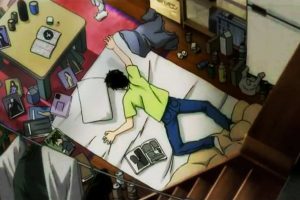
WHAT'S HIKIKOMORI?
For the uninitiated, hikikomori is a term used to describe those who rarely leave their house, and seek extreme degrees of isolation. Some never set foot outside their homes. Others occasionally do, heading out to buy food or even to the cinemas for the latest blockbuster, but all of them are completely, socially isolated. They would even limit their interaction with their own family members. Although this social phenomenon is predominantly widespread in Japan, I recently stumbled upon a Reddit thread that tells me that we too, have our share of social recluses hidden in their rooms somewhere, unseen by society. Through a local forum, I stumbled upon Andrea’s story. Back then, Andrea cooped herself up at home for eight consecutive months. Waking up at five every morning, she spends her time browsing Reddit, reading and binging on TV series, only leaving her room for lunch and dinner, which her parents would prepare for her. At around 11 pm, she will head to bed and the same routine repeats for months, and in those months, she did not step out of her house once.Her home had become a place of solace for her, a fortress she can’t bear to leave.Likewise, this is the case for the many hikikomori in Singapore, who have taken to forums to pour the feelings that they have hidden away from their friends and family.
WHY DO THEY ADOPT THE HIKIKOMORI LIFESTYLE?
Hailing from a ‘financially comfortable’ background, Andrea is aware that she is more fortunate than most, as she could afford the option of not having to work or fend for herself. But because of that, she feels more pressured to pay her parents back for all that they have done for her. The low self-esteem, crippling social anxiety, and negative outlook on life that came from her being bullied in school when she was younger kept her imprisoned. The self-imposed pressure and the expectations about the future stressed her out and caused her to feel even more helpless. When she finally entered the workforce, work became her life. All she did was wake up, go to work, head home to have dinner with her parents, and repeat. Due to her micromanaging boss, she grew to resent work. Even so, she continued working for some years to save up a sum of money before eventually resigning, dampened by the rat race. “So after that, I didn’t really have a plan. I just stayed home. Months quickly turned into years. And because I was used to a solitary lifestyle of just reading and watching drama and anime, I just shut myself off from society and basically became hikikomori, just living off my parents and my savings.”ONLY FOR THE PRIVILEGED?
Of course, not everyone is privileged enough to be able to just drop everything and withdraw from society in the first place — most of us are not as financially blessed. Through r/hikikomori, I was able to speak to another Singaporean hikikomori, 24-year-old Josh*, who shared how he was once a hikikomori. Like Andrea, Josh comes from a financially stable family.“Maybe we were too sheltered. Maybe we were too spoiled and everything comes to us easy and without any barriers. Back then, I felt that no matter how useless I was, I would still be able to live comfortably, or still be able to live somehow.”An avid fan of Disney’s classics, Josh had a grandiose dream of being a 2D Animator for Disney. When news broke that Disney closed down their 2D animation company, his hopes and dreams were dashed. Dejected, he let himself waste away, passing the days by gaming and watching anime at home.
WHAT'S THE CAUSE FOR THIS?
For many of us, such behaviour is aberrant and tough to comprehend, much less empathise with. It’s not surprising for us to jump on the conclusion that hikikomori chose to stay cooped up at home because they are just “lazy” and “spoiled”. “We all have problems, so why can’t they just do something about their problems?” But unlike what we think, the hikikomori syndrome is not another convenient excuse to be idle.In fact, most, if not all, hikikomori hate the plight that they put themselves in, and they are ashamed of it.“When I was hikikomori, I lost all desire for wants. Normal things like going to movies or buying expensive new things don’t interest me anymore. I don’t know why I exist, to be honest. Sometimes I can feel my parents’ disappointment in me and I don’t feel good too,” shares Andrea. They have confined themselves to their homes, but most hikikomori actually want to return to society. However, the fear and anxiety of how society may react to them. Even if they manage to take the first step out of their homes, they are plagued by this constant fear that they are being judged by those around them, afraid that the world wouldn’t come to accept them because of their past. Maika Elan, a Photographer exploring the topic of hikikomori, shared on National Geographic that “Over time, hikikomori lose whatever self-esteem and confidence they had, and the prospect of leaving home becomes ever more terrifying. Locking themselves in their room makes them feel ‘safe’.” Similarly, Andrea admitted that the very paranoia of being judged for being a hikikomori is the toughest obstacle she had to overcome. She would often slip back into isolation because of it. Thanks to volunteer work at a church, Andrea was able to break out of the hikikomori syndrome. She eventually managed to land herself a job through one of the other volunteers. As for Josh, he stumbled upon the animes Re:Zero and Konosuba, which shifted his perspective on life. Both shows feature male protagonists who were hikikomori and Josh was able to relate to them strongly. “In Re:Zero, it tells us that no matter where you are, nothing’s going to change if you don’t put in any effort to take charge and improve yourself.” Witnessing his friends’ success also pushed him to eventually change his lifestyle.
“What gives them the drive to keep doing what they do? Why are they set on improving themselves and going out there to find jobs and socialise, and to be proactive with their lives?”These were the questions that Josh posed to himself, and subsequently embarked on a quest to uncover. “Sometimes it’s hard, but you just have to remember that there are other people out there who are struggling and still trying their best as well.” Today, he works as a Digital Designer, which is not too far off from his initial dream. Although, there are others who struggle to break out. “It all started after he finished his degree overseas and came back. He didn’t find work and just stayed at home gaming and surfing the net. We’d ask him to come out for coffee or meals but he’d always turn us down.” Tim*, a male in his 30s, shares with me about his friend who has been a hikikomori for over 10 years. “I’ve a feeling that the shame of being long unemployed while everyone else is working just drives him to become a hikikomori. I guess his parents still buy him food or give him spending money so he doesn’t need to force himself to get a job.”
A VICIOUS CYCLE OF FEAR AND PARANOIA
Although hikikomori is a social condition that has not been widely recognised as a mental illness, many of them do require mental health care. Some turn to this reclusive lifestyle due to a lack of purpose or existential crisis while others do so as a form of rebellion to cope with trauma such as childhood abuse or bullying. While hikikomori wish to recover, they are so ashamed of their past that it freezes them up, causing them to retreat back into their shelter. However, the longer they isolate themselves from society, the harder it will be to integrate back into it. It’s a vicious cycle that they are dealing with. For such people who haven’t interacted with anyone nor formed any ‘proper’ relationships, it could be tougher for them to reintegrate into society as they grow older, especially if their family members (like their parents) are no longer around to support them. In Japan, this has become a real problem. These days, it’s an absolute nightmare if we were to be void of our handphones, computers, and the internet. While technology is not the root cause of the hikikomori syndrome, it provides a gateway to endless virtual worlds that we can immerse ourselves in. Nat*, another Redditor, says he usually spends an average of 10 hours on his computer and does not see the need to leave his home. Whether it’s food or entertainment, technology has made that conveniently accessible and available for us. There are even avenues to learn and work ‘virtually’, with online classes and freelance jobs. All of these make it even easier for one to slip into the hikikomori lifestyle. With that said, however, completely isolating oneself from society is not healthy, and should not be normalised. Regardless, Josh hopes that hikikomori will have it in them to realise that they are responsible for themselves, and find the strength in them to overcome it, just like he did.“There’s only so much that others can help you with. Only you can change yourself. Even if it’s for your parents or yourself, I hope you will find it in you to want to get better.”“We all are living for a reason. We need to reflect on that more often, to put our lives into perspective. Once things are in perspective, it will all make sense in the end.” “After all, life exists and thrives beyond these four walls, but it’s up to us whether or not we want to open the door to live.” *Names have been changed to protect the identity of the individuals. Also read: It’s The 21st Century, Why Do We Still Treat Maids Like Slaves? (Header Image Credit: Unsplash)
 Some of the 1000 volunteers who were spring cleaning the homes of a group of low-income senior residents
As part of the 12th edition of Project Refresh by Young NTUC (YNTUC) and the North East Community Development Council (CDC), volunteers from unions, schools, corporate organisations, grassroots, and fellow residents spruced up the homes with handmade Chinese New Year decor. Red packets and batik paintings of ‘福’, which means happiness in Chinese, were also prepared for them.
“When they put [the decorations] up, many people tell me [that it will remain] there until Christmas,” said one of the volunteers Madam Molly, 63, as she deftly folded and stapled red packets into a lantern.
To Molly, Chinese New Year isn’t just a family affair but also a community one.
“Folding these (lanterns) is a small gesture, but Chinese New Year is nothing without the atmosphere. It makes me happy knowing that my lanterns will brighten up my neighbours’ home.”
Some of the 1000 volunteers who were spring cleaning the homes of a group of low-income senior residents
As part of the 12th edition of Project Refresh by Young NTUC (YNTUC) and the North East Community Development Council (CDC), volunteers from unions, schools, corporate organisations, grassroots, and fellow residents spruced up the homes with handmade Chinese New Year decor. Red packets and batik paintings of ‘福’, which means happiness in Chinese, were also prepared for them.
“When they put [the decorations] up, many people tell me [that it will remain] there until Christmas,” said one of the volunteers Madam Molly, 63, as she deftly folded and stapled red packets into a lantern.
To Molly, Chinese New Year isn’t just a family affair but also a community one.
“Folding these (lanterns) is a small gesture, but Chinese New Year is nothing without the atmosphere. It makes me happy knowing that my lanterns will brighten up my neighbours’ home.”
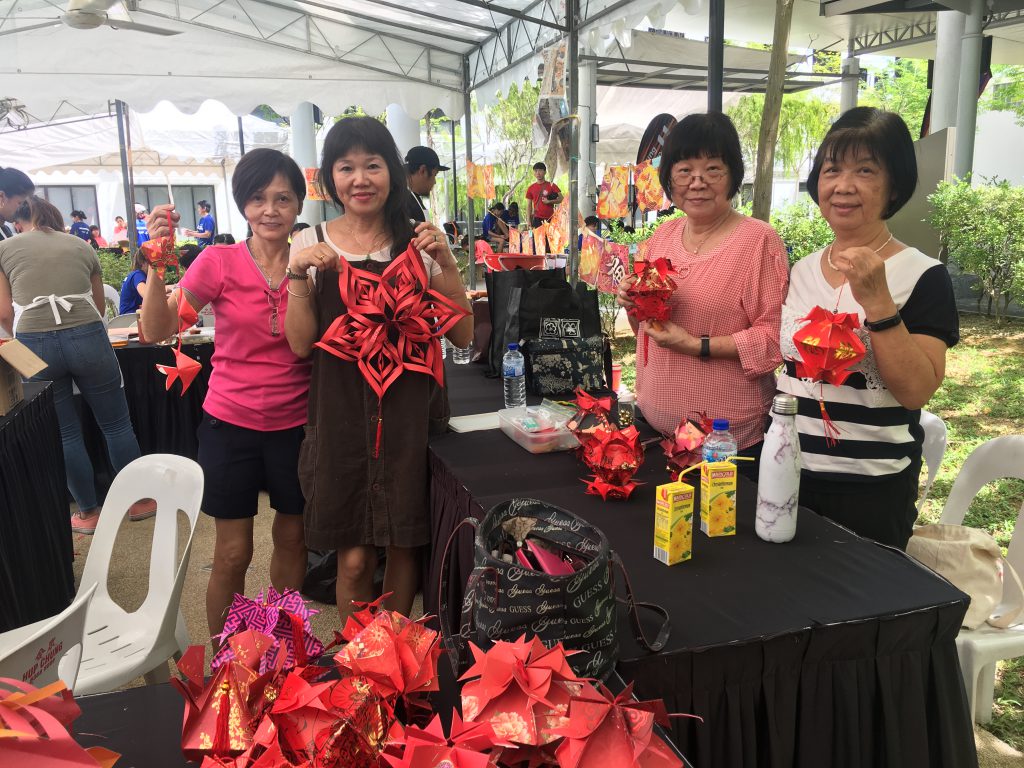
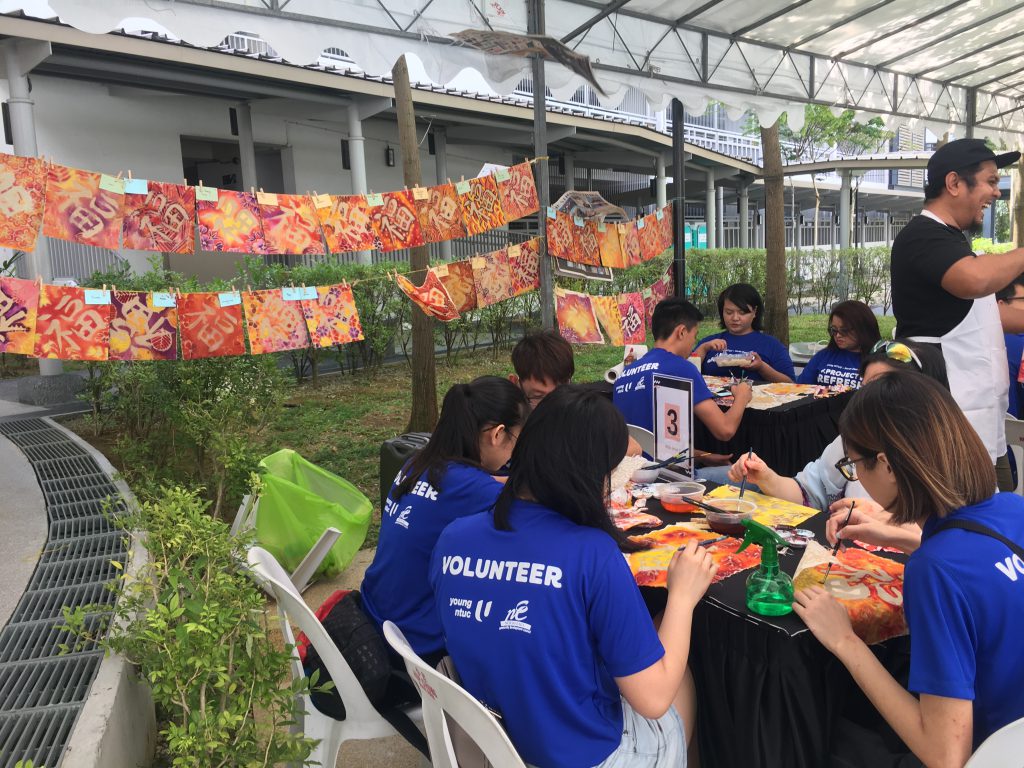
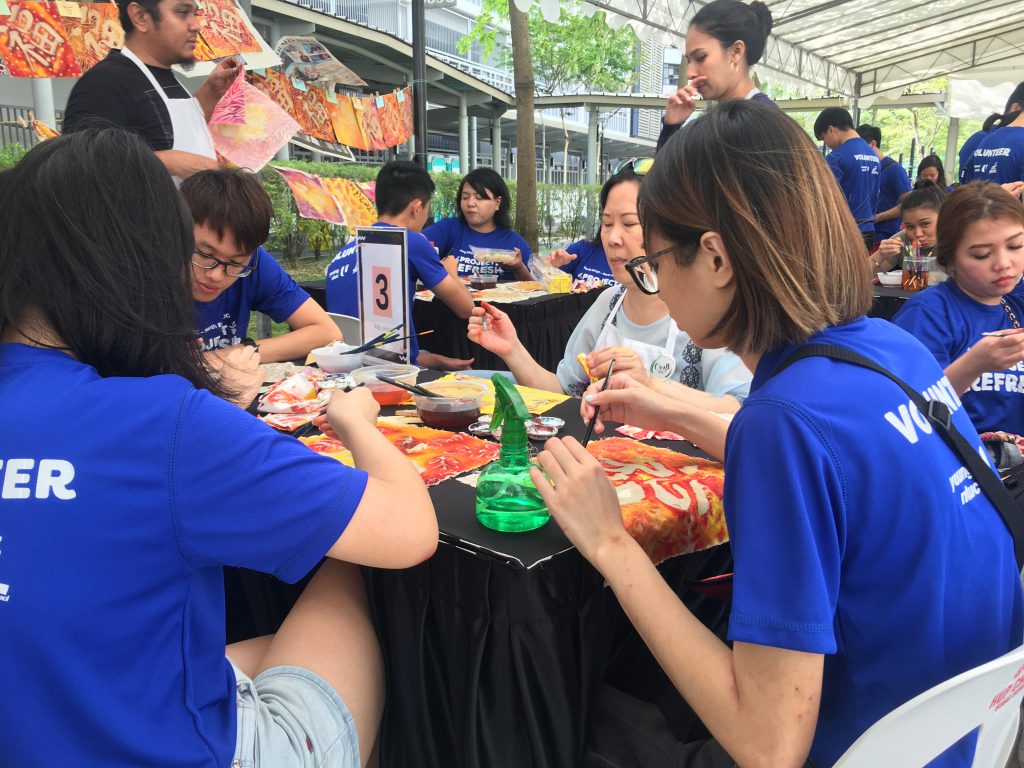
A Reunion Under Lanterns
Molly’s lanterns were later hung at the entrance of Mdm Celeste’s home. The 69-year-old retiree said as she looked up at the lanterns, “I don’t usually put these up,” as she shared about the several falls she has had, and how her bad knee prevents her from taking on any chores that require her to climb or lift heavy loads. Which was why she was especially grateful when a group of bustling volunteers came by to clean her windows, change her curtains, and decorate her home. All of those she had been wanting to do, but are too physically strenuous for her.
“Talking to people feels very ‘shiok’ you know?”
Beyond lending their helping hand, the company of the Project Refresh volunteers were also a significant part of the project to some of the senior residents, and vice versa. “We came here expecting a lot of clutter and many things to do, but her home is actually quite organised already. I think it’s the company that she really misses,” said 29-year-old Zaki. He volunteered expecting a physically taxing morning, but found himself enjoying the conversations with his 67-year-old resident, Madam Mariam. As the secondary school volunteers moved her carpet and mopped the floor, Madam Mariam spoke heartily about her younger days when she ran a food stall. Her sprightly movements left no hint that she had suffered a stroke just two years ago.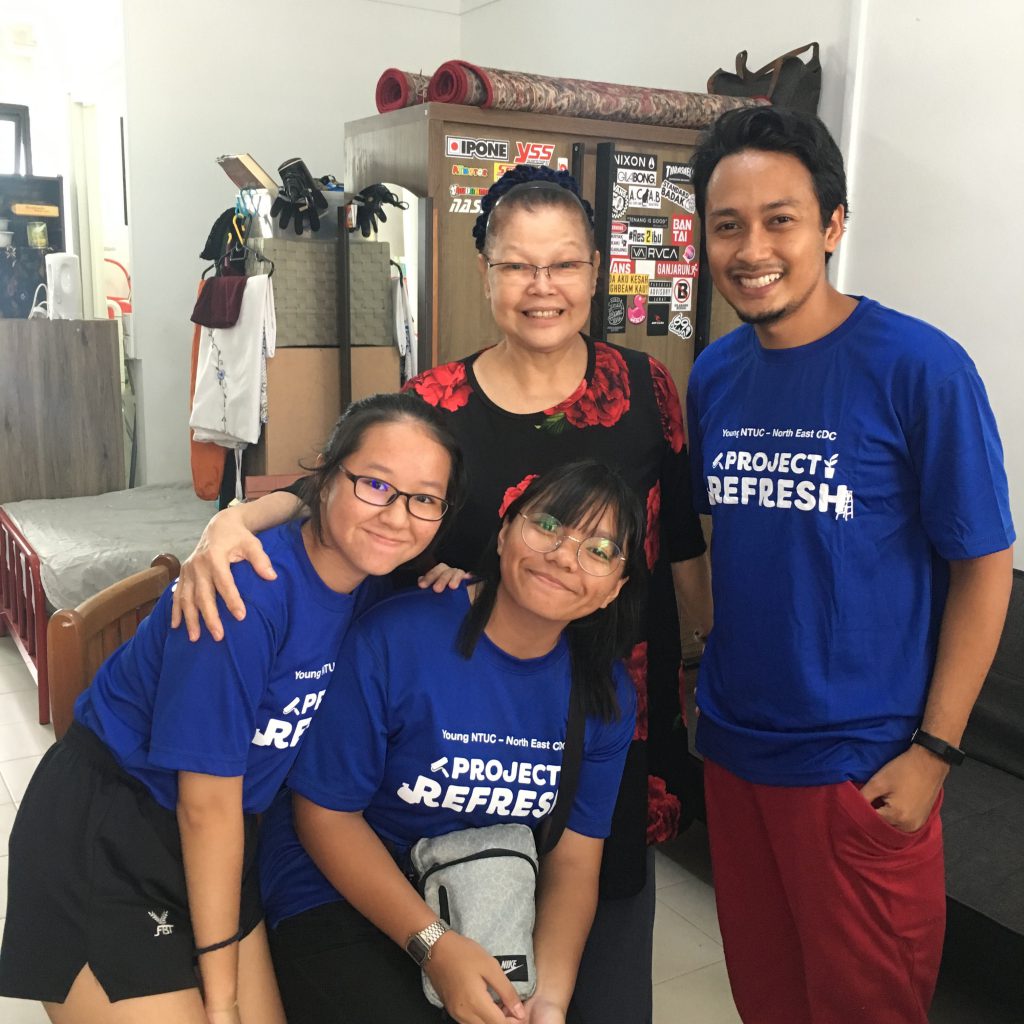
Picking Something Up From The Senior Residents
While the project was directed at giving support to the senior residents, some of the volunteers also found themselves taking away something from the residents they helped. “I have only painted once in my life, for my own house. But it’s patchy,” said Gan, a lecturer and first-time volunteer at Project Refresh. Looking at the patchy paintwork he did for his resident, Abdul Malik’s house walls, he added sheepishly, “just like that.” Little did he know, 64-year-old Malik was actually an apartment painter himself, but has had his movements limited ever since he got a stroke just a few years before. And soon enough, Malik became a painting teacher to Gan and the other volunteers in his home. As he muttered ‘aiyo’s and ‘aiya’s at the inexperienced painters (volunteers) getting paint on their own clothes and even faces, he patiently guided them with technical tips like painting with ‘W’ shaped strokes. “They might not know how to paint properly, but they have the heart. It’s very heartwarming knowing that they can use their morning for anything else but they chose to come here to help. They are very willing to learn also,” said Malik.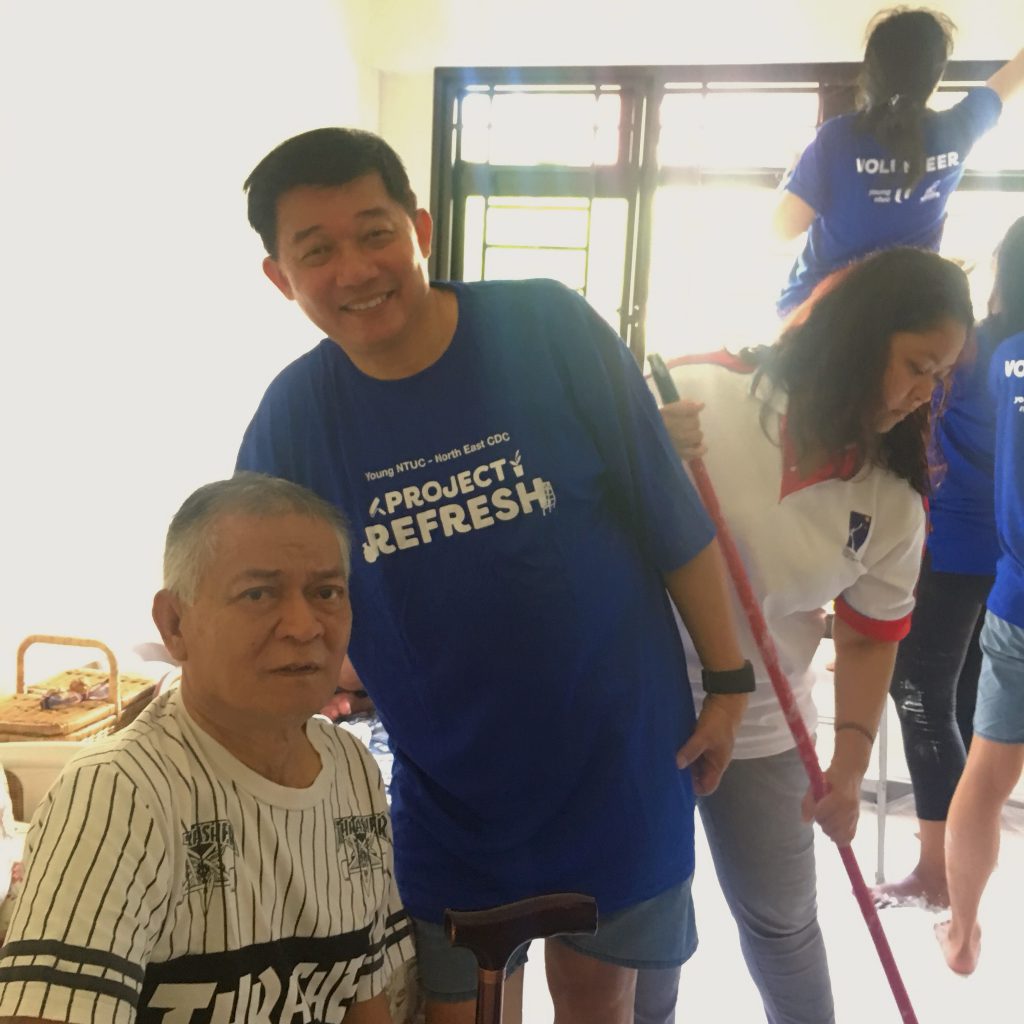
Filling Homes With Warmth
By the end of the day, 96 households received the Project Refresh treatment. In action, the volunteers are there to declutter, clean, paint, and decorate. However, the significance of them there is more than just the physical help. For these senior residents living in isolation, the commotion and presence of volunteers are rare occasions that fills their home with conversations and laughter that they otherwise lack. And for these residents, it was also a perfect start to their Chinese New Year. “They make my house feel like a home,” said Madam Mariam. This article is contributed by Young NTUC. Also read: 65-Year-Old Mdm Rebecca’s Life: A Look At The Reality Of Singapore’s Privilege Gap.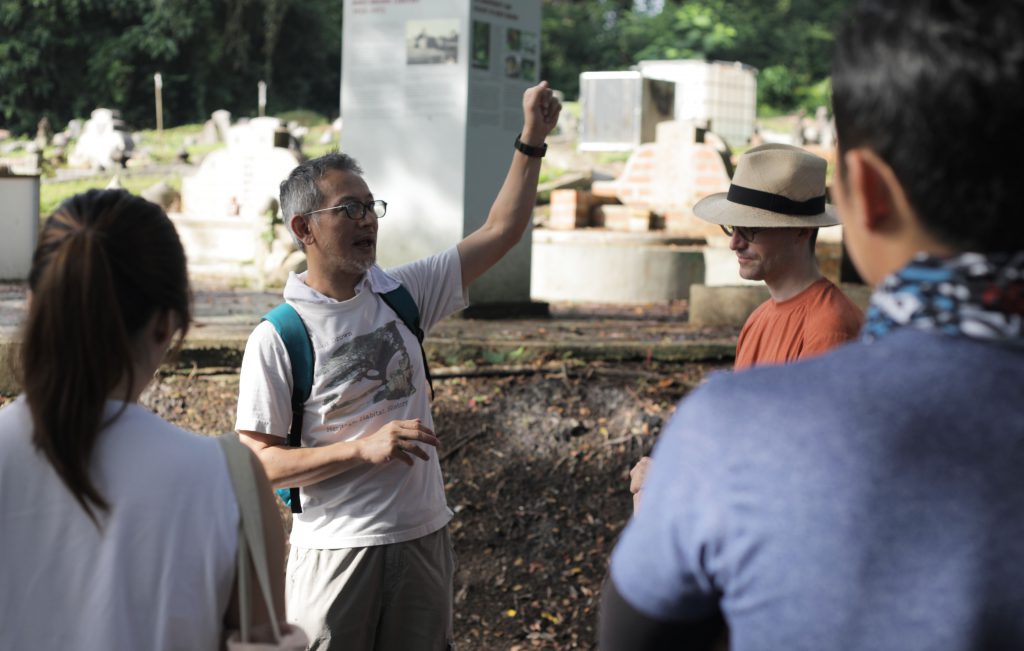

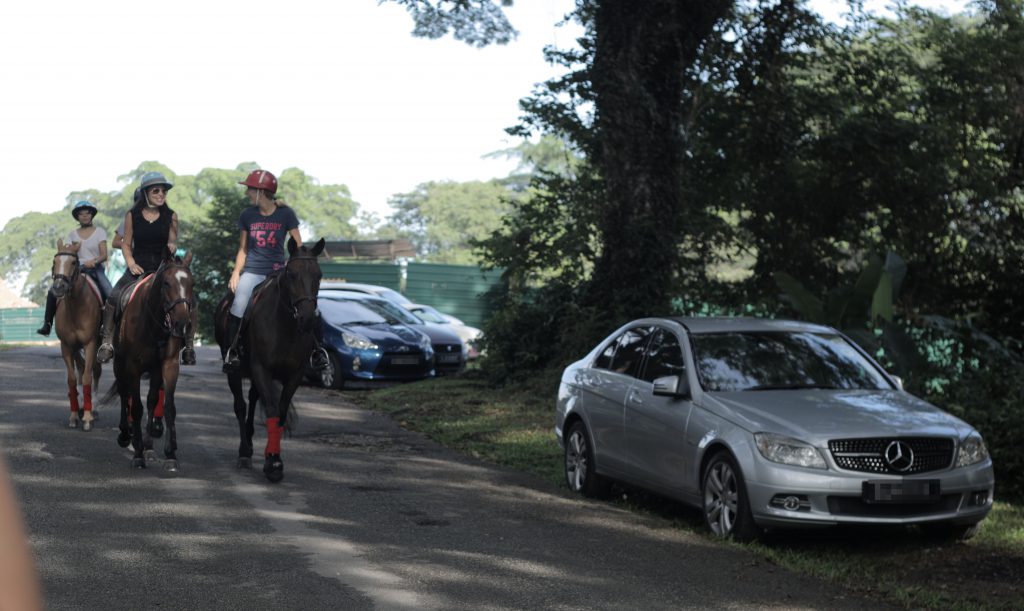

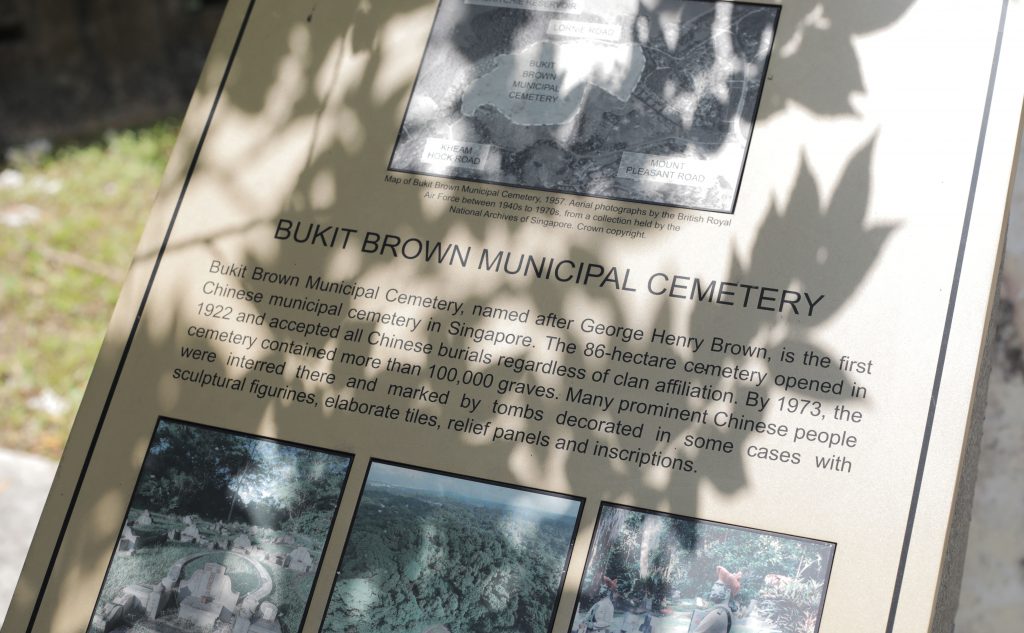

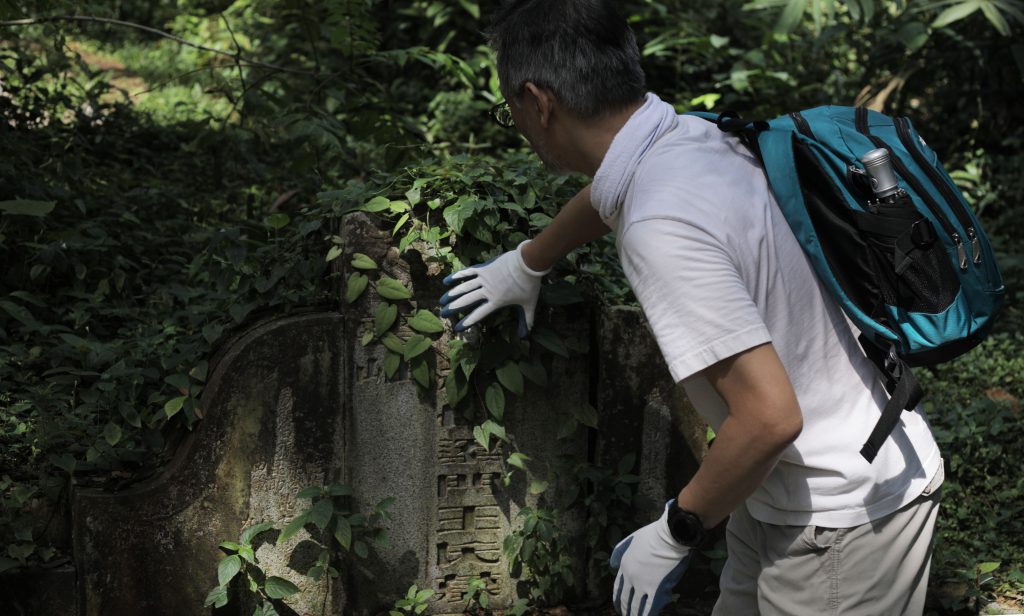

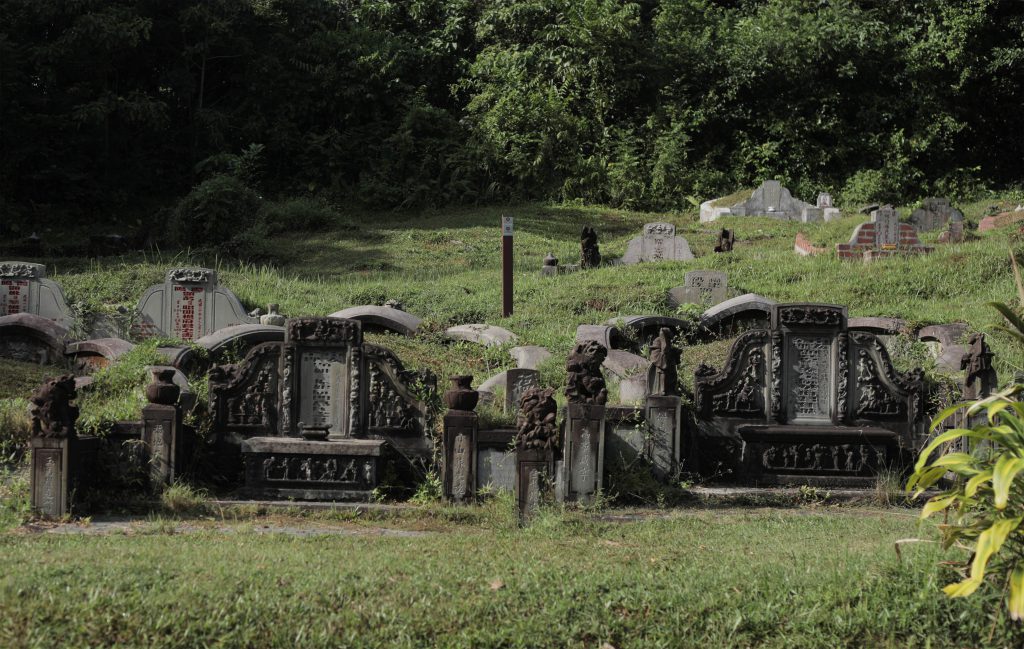
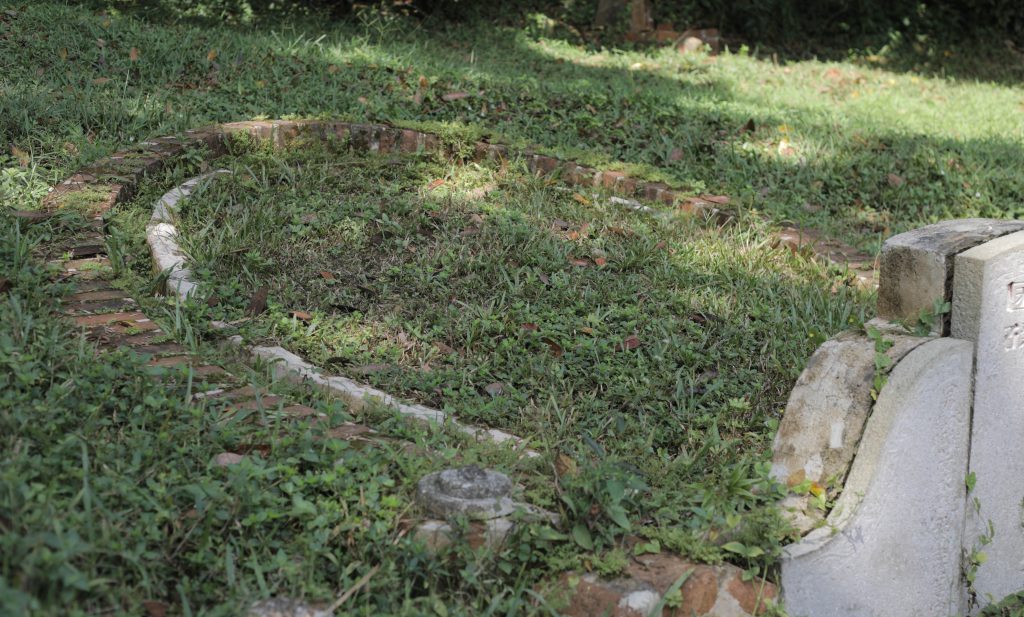
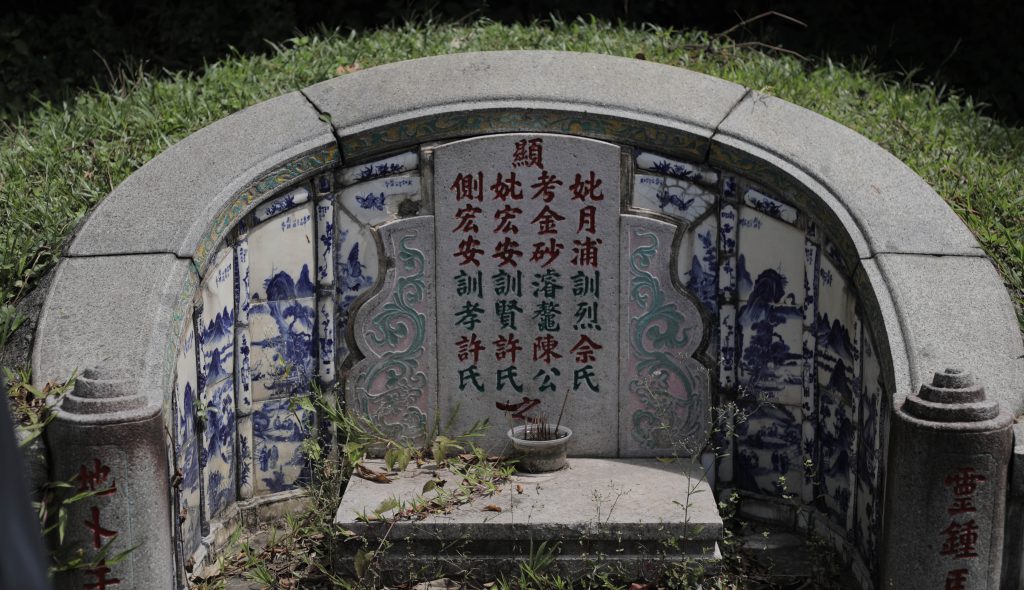
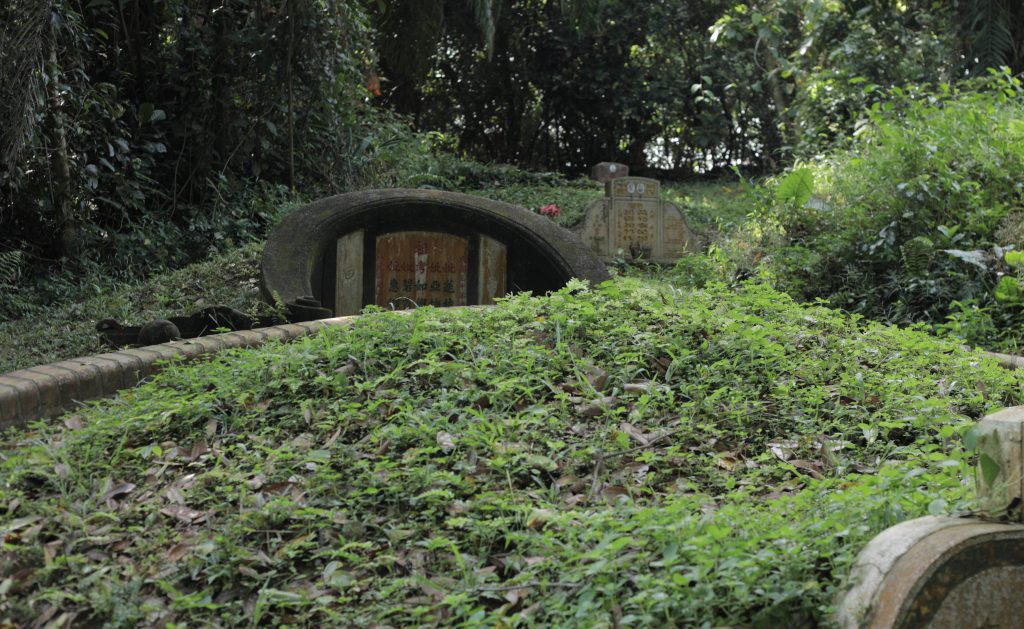
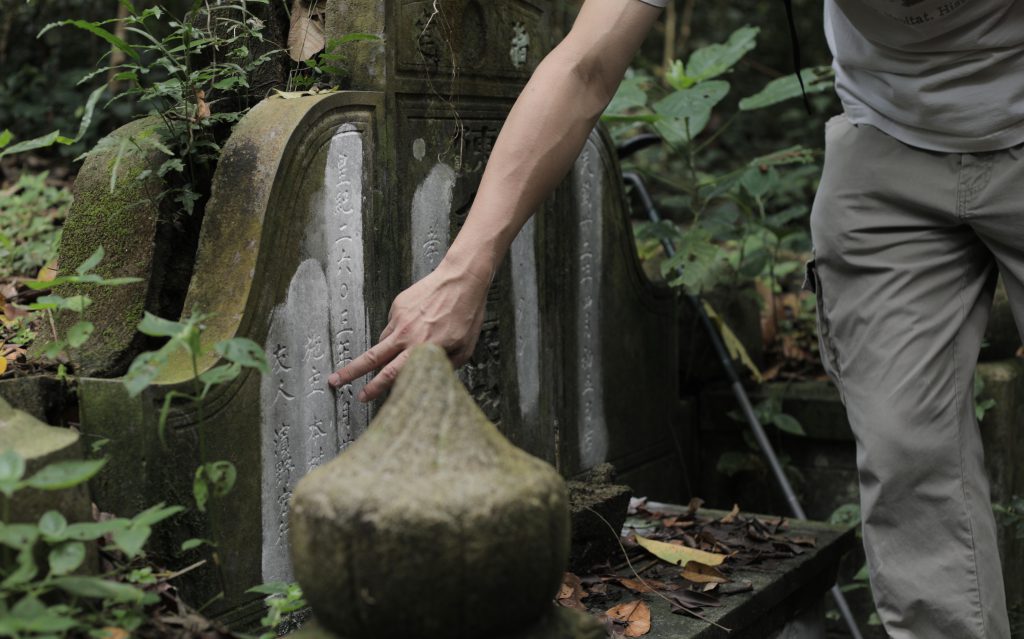
 I got a glimpse into what was life back in the 1940s, of the challenges that some of these people faced and the brutality of living in the period of a World War. I'd be lying if I said I can relate to the struggles these people faced, because I can't. But the stories that Darren regaled us with made me better understand how our culture and society came to be, and better appreciate the luxuries we enjoy today. Although I am not converted to be a lover of cemeteries, I do have a new-found appreciation of it.
To think that I’m born and bred in Singapore but knew nothing about our local cemetery and its stories, and it takes Darren, a Malaysian, to school me.
It put things into perspective and I understood a little more about why people fought for the preservation of Bukit Brown. I was one who couldn’t care less when plans of Lornie Highway and further redevelopment of the area were announced. But now that I’ve seen the tombs and heard the stories, I know the importance of preservation and conservation.
Urbanisation is important for the progress of a nation, but if come one day where all of such historical or heritage sites like Bukit Brown had to make way for progress, I think it to be a truly sad day.
Also read, With Anti-Trump Protests Around The World, These Causes Closer To Home Are Also Worth Paying Attention To.
I got a glimpse into what was life back in the 1940s, of the challenges that some of these people faced and the brutality of living in the period of a World War. I'd be lying if I said I can relate to the struggles these people faced, because I can't. But the stories that Darren regaled us with made me better understand how our culture and society came to be, and better appreciate the luxuries we enjoy today. Although I am not converted to be a lover of cemeteries, I do have a new-found appreciation of it.
To think that I’m born and bred in Singapore but knew nothing about our local cemetery and its stories, and it takes Darren, a Malaysian, to school me.
It put things into perspective and I understood a little more about why people fought for the preservation of Bukit Brown. I was one who couldn’t care less when plans of Lornie Highway and further redevelopment of the area were announced. But now that I’ve seen the tombs and heard the stories, I know the importance of preservation and conservation.
Urbanisation is important for the progress of a nation, but if come one day where all of such historical or heritage sites like Bukit Brown had to make way for progress, I think it to be a truly sad day.
Also read, With Anti-Trump Protests Around The World, These Causes Closer To Home Are Also Worth Paying Attention To.Attributing her strength to her religion, Mdm Rebecca emphasised on how a positive mindset helped tide her through the hardships. “Life is temporary and all these challenges are part of life. I don’t cry easily because crying doesn’t change anything. I just do my best with what I have and I pray for the best.” As I chatted with Mdm Rebecca at her doorstep while volunteers from the Young NTUC- North East CDC Project Refresh were cleaning up her unit and giving the walls a fresh coat of paint, I couldn’t help but admire her for her resilience.“My mother had already suffered. I don’t want my cousin to go through the pain of what my mother had to go through.”
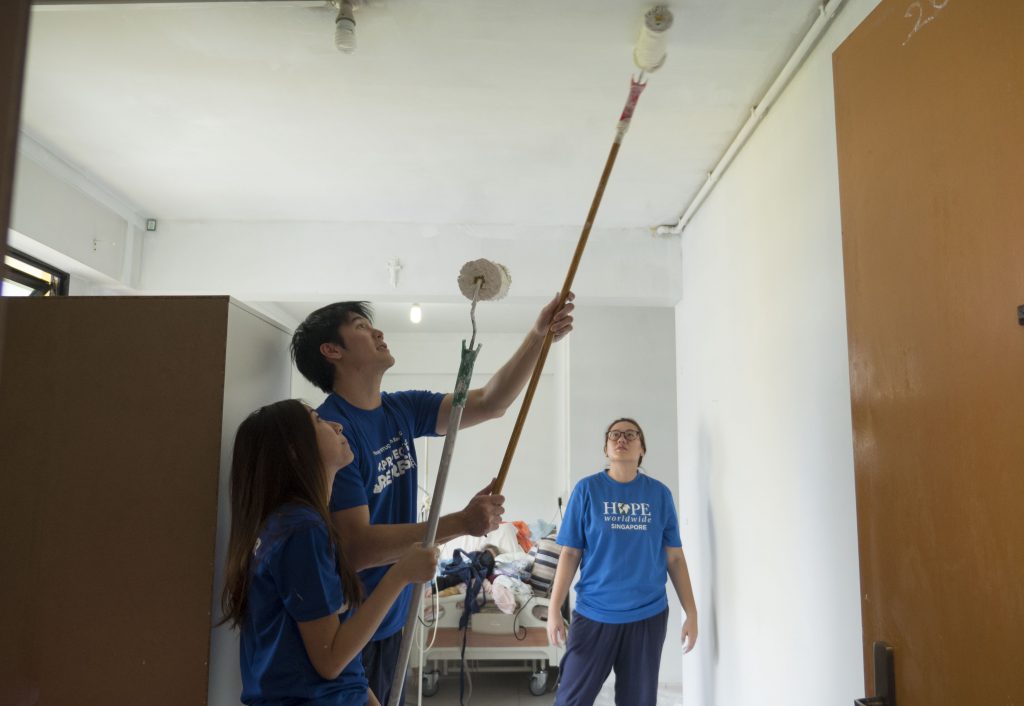
Her fizzy, greyed hair and gaunt face tells of a woman who is still facing adversity, but Mdm Rebecca’s strong spirit is refreshing and humbling. She spoke about helping neighbours in need and counselling her friends and their children. Her empathy in prioritising other people’s problems above so many of her own made me feel a mix of guilt and respect.
Having come from a relatively privileged middle-class background, I couldn't comprehend the significance of her struggles until I stepped into her home. Mdm Rebecca’s home is about as big as a typical HDB flat’s living room, with a small corner as kitchen and a toilet right beside it. The only bed in the flat is taken up by her cousin.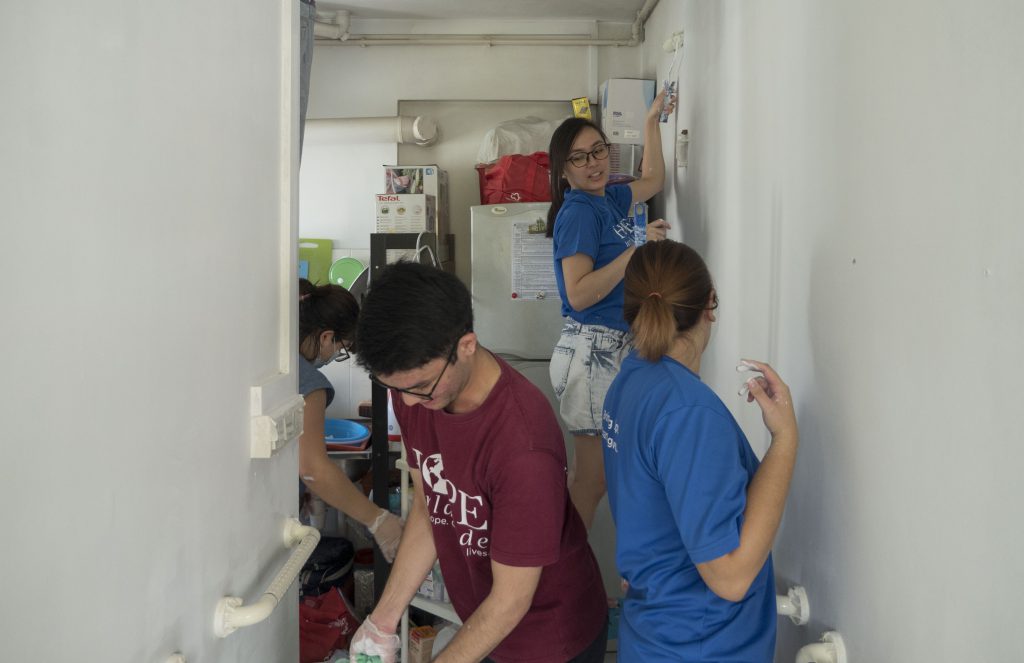
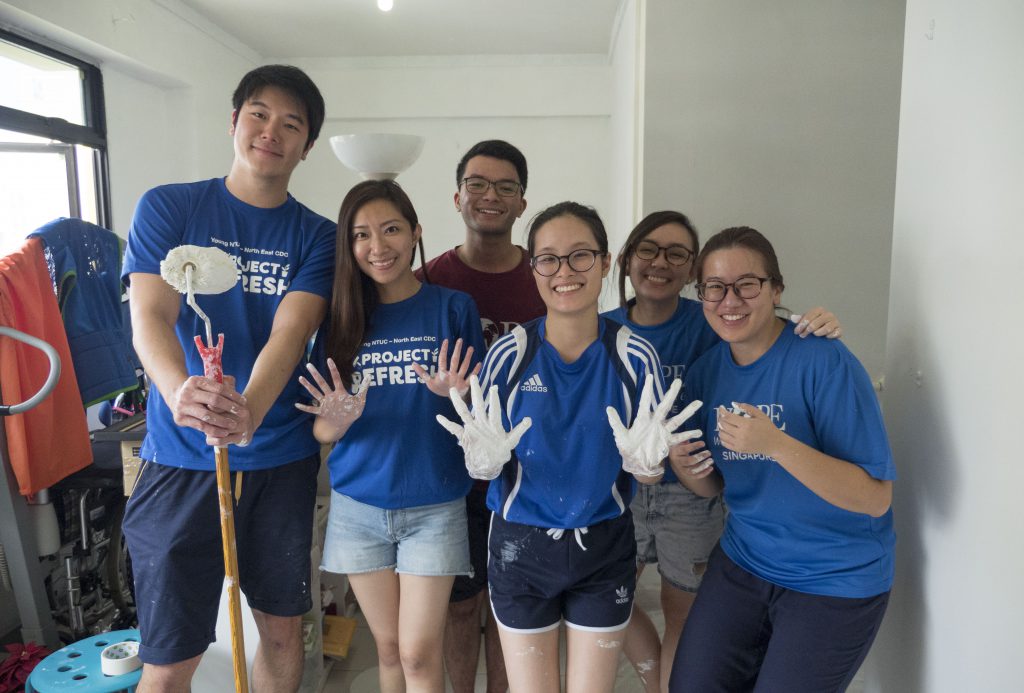
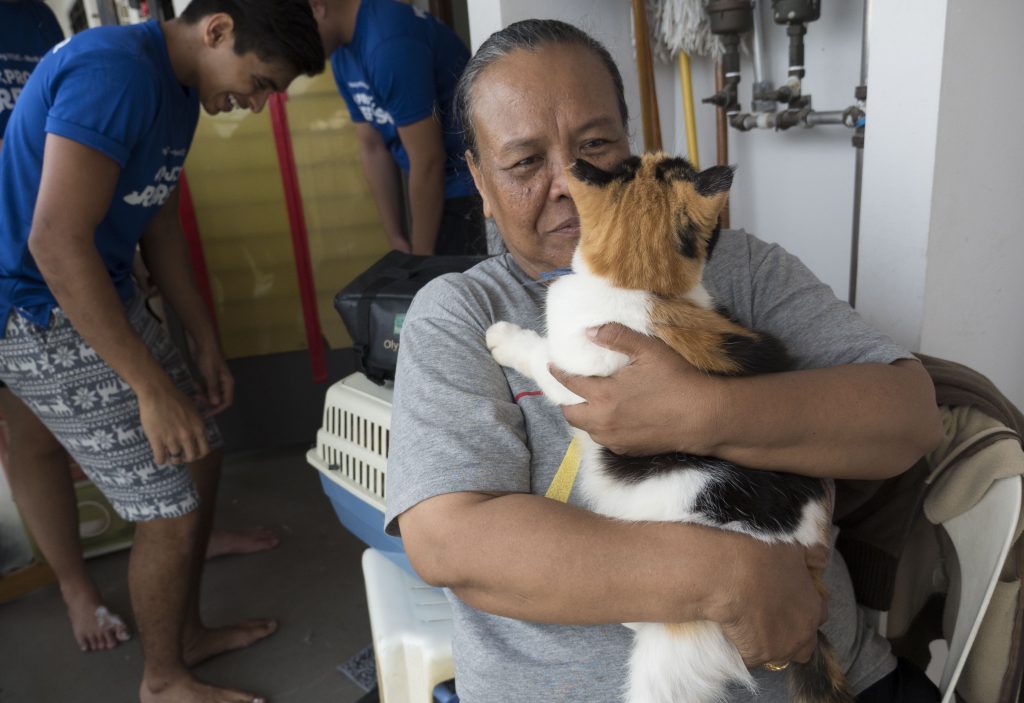
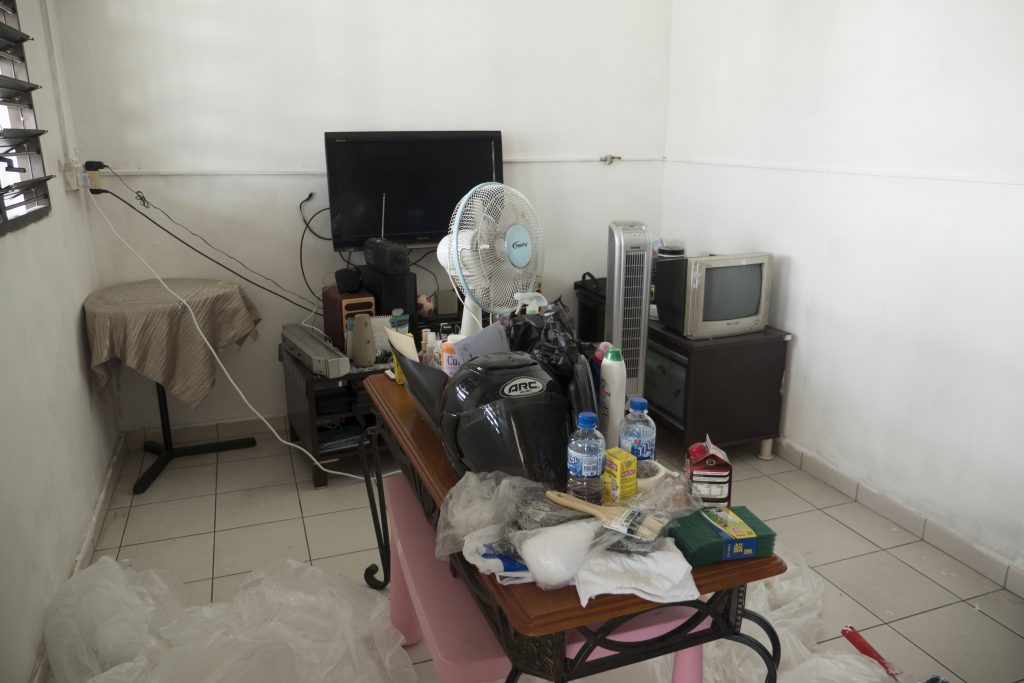
Volunteer with Young NTUC
As millennials, we tend to procrastinate volunteering as much as we want to give back to society. But today, there are many volunteering opportunities available. Besides Project Refresh, there is also the Young NTUC U Heart, which lets you decide your own do-good projects for low-income families, the environment, for workers, the elderly or people with disabilities, and children or youth-at-risk. So you get to dictate the kind of change you want to make! Learn more about Young NTUC’s volunteering programmes here! * Name has been changed for privacy reasons This post is written in partnership with Young NTUC. Also read: To The Generations Before Us – Trust The Millennials With Singapore’s Future.Ah Beng Shops’ Ah Bengs Don’t Look That Ah Beng
Many of us have the impression that the people running Ah Beng Shops are ah bengs. When I left office for Bedok, I had even told my colleagues that I was going to make new ah beng friends from Ah Beng Shops. “Good luck, have fun,” they said. Of the 15 to 20 Ah Beng Shops I walked past, only three of the shop staff looked a little like ah bengs. And only one shop exuded the ‘ah beng vibe’: blasting music so loudly that it could be heard from a few shops down, and a strong smell of cigarette smoke emanating from the shop. Even so, the staff of that shop looked like an ordinary teenage boy - no gold hair, piercings, or tattoos like what you would expect of a typical ah beng. In fact, more than half the shops I saw were either run by uncles who look like those you’d catch stirring kopi while watching TV at kopitiams at midday, or average young men who look like they were just working a part-time job to earn some money.
Venturing Into The Ah Beng Shop Industry
I first stepped into Leon’s shop with dread for he looked like a middle-aged ah beng who would spout an uncouth mix of Hokkien and Mandarin, and I panicked at having to express myself with my atrocious grasp of Mandarin. The other half of me was worried that he will bite my head off for poking into his business. However, my perception of him totally changed as our conversation started, making me guilty for putting such a stereotype on him before I even spoke to him. Not only could he speak in fluent English, he expressed himself well. It was evident that Leon was neither illiterate nor an ah beng. As I came to know later on, he is in fact a graduate from a local university. For 40-year-old Leon, venturing into this trade wasn’t a choice as much as it was a fight for survival. Previously a branch manager at a bank, Leon had to do a drastic midlife career change after getting embroiled in a bad case of office politics, leaving him no choice but to leave the banking industry for good. Having spent 10 years in the banking industry and well into his thirties, switching to a completely new industry was not only a scary thought, it was problematic. Many of the routes he considered, like going into F&B, would require him to start from the bottom again - something he cannot afford as a father who has to support his daughter and his aging parents. With the help of friends dealing with mobile phones, he settled on opening an Ah Beng Shop together with a business partner. Even then, he had to learn the ropes of the trade by himself, spoiling many phones and paying many ‘school fees’ in the process.Fighting For A Slice Of Pie
While there are Ah Beng Shop bosses who could diversify with multiple shops across the island to capitalise from different groups of customers like Seedly wrote about in an article, Leon only has one physical store. Having counted more than 15 Ah Beng Shops in the vicinity, I wondered how Leon even survives amidst such extreme competition. “Actually, there are more than 20 shops here,” he corrected me nonchalantly, “it’s very competitive, so we just have to find more channels of revenue online.” Although Leon doesn’t have multiple shop fronts, he operates his business over online platforms like Carousell and Qoo10. He also travels around to collect mobile phones from other shops around Singapore for repair, which his staff and himself would stay up until past midnight to complete.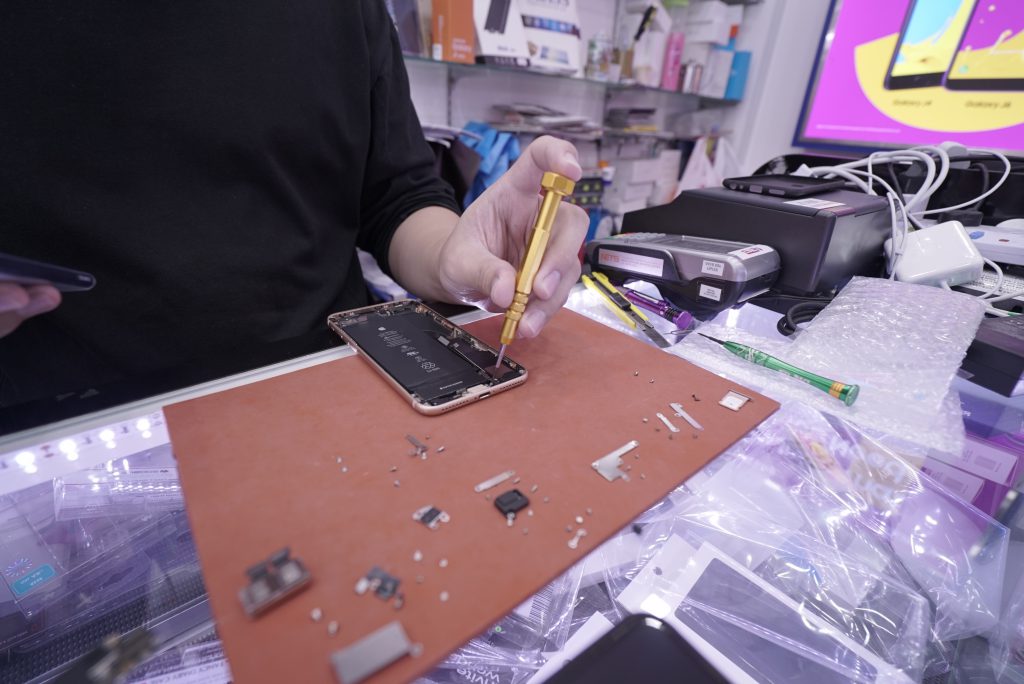

The Shame That Comes With The Ah Beng Label
Having runned this business for close to six years, I asked how Leon felt about being labelled an ah beng merely because he ran an Ah Beng Shop. “Like that lor, if people want to think of us that way, what can I do about it?” However, when I probed further about his family, his reaction was a different one altogether. “My mum would say things like ‘waste money send you to university, then now you come out and do this kind of things’, ‘so shameful’, and that I’m a disgrace.” As Leon shared about the hurtful judgment from his own mother, I couldn’t help but notice his quivering lips when he paused to find the right words, as if holding back some repressed emotions. Leon’s wife works an office job and would always encourage him to join her at company gatherings, but having seen the reactions people would give whenever he reveals what he works as, he would choose to avoid such social gatherings because “I don’t want to embarrass or make things awkward for my wife.” Leon gets such judgment from other parents when he picks his daughter up from school as well. “When I tell (the other parents) that I sell handphones for a living, they will look at me like this.” Leon proceeded to stare at me with wide-opened eyes and raised eyebrows - a puzzled look that is best expressed with the words 'What?' and ‘Why?’. Confirming my suspicions that such negative judgement from people gets to him, Leon bemoaned about the lack of respect for people in his trade. Having to serve many ridiculous customer requests throughout the years ranging from requests to stick on customers’ screen protector for free to being maligned for spoiling a phone after teaching someone how to upload a photo on Facebook, Leon explained that their tough, no-nonsense personality came about because of such customers. “Then if we don’t agree to these requests, customers will say ‘your service sucks’.”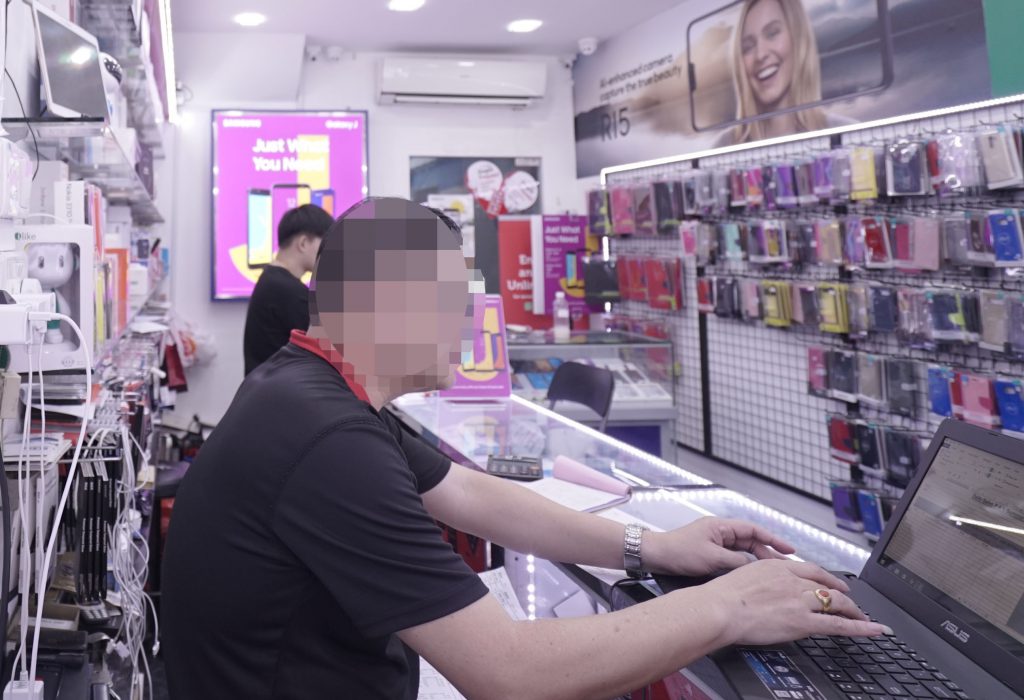



My heart raced when I saw the cheetahs bounding towards the child – ‘that’s it, bye bye,’ I thought. What followed was anger. I was mad at the parents for letting curiosity get the better of them and for even considering putting their children’s lives on the line. One pounce and their baby could be gone, just like that. Then again, they probably hadn’t fathomed that grim possibility, considering that they had let their children walk around amidst the cheetahs like they were at a city park.

As much as I sympathise with the victims and their family, such acts are stupid and incredibly selfish. At the core of it, many of the victims were risking everything just to experience the thrill of getting up close with such predatory animals. Not only do the victim or their family suffer, these acts affect the animals, the respective zoo or park and its staff. If there is one thing I learnt from Jurassic Park, it’s that you don’t want to mess with creatures that are faster, stronger, or which are naturally deadlier than you are, especially when you’re in a confined area with them. Some rules are designed to keep you safe, not to be broken. I have nothing against these safari parks of course. I love animals and am all for the conservation and education efforts. But if humans are not capable of following simple instructions or having basic survival instincts, maybe we shouldn’t have such potentially-fatal leisure activities. With common sense apparently not common enough in our kind, perhaps what we need are terrifying videos of all those past incidents to be played to visitors as part of the safety briefing. And if that still doesn’t work, maybe people need to be forcefully locked in their car, in some sort of advanced safari vehicle that has locks that can only be remotely controlled by park rangers. With technology and driverless cars today, why not, right? Or maybe, we should just let natural selection take its course. Also read, Just Because You’re A Millennial Doesn’t Mean You’re Immune To Fake News. (Header Image Credit: Out Of Africa Wildlife Park)
1. Being Less Emotional And Laughing More
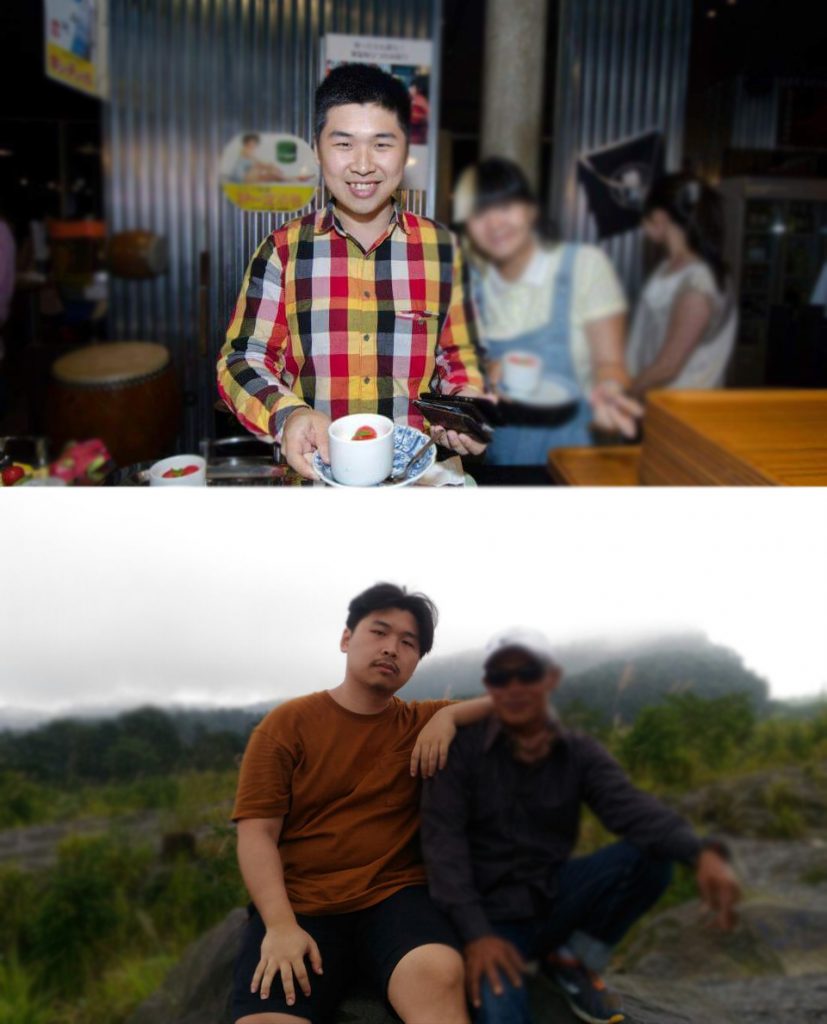 I grew up fat and got a lot of nicknames. It started with “Eugene Sohfat” in primary school, then “Hugene” in secondary school and “Tub of Lard” in polytechnic, and I used to feel insecure when I go to the beach cause my white tummy felt like a pile of forgotten yoghurt. Now I just laugh at it.
I’m a lot more confident and generally less emotional about things now. I think the older you get the more well-shaped your perceptions and opinions are. I find myself being more truthful to strangers and people in general, and not having to worry so much about judgement too.
– Eugene, 27
I grew up fat and got a lot of nicknames. It started with “Eugene Sohfat” in primary school, then “Hugene” in secondary school and “Tub of Lard” in polytechnic, and I used to feel insecure when I go to the beach cause my white tummy felt like a pile of forgotten yoghurt. Now I just laugh at it.
I’m a lot more confident and generally less emotional about things now. I think the older you get the more well-shaped your perceptions and opinions are. I find myself being more truthful to strangers and people in general, and not having to worry so much about judgement too.
– Eugene, 27
2. Finding A Purpose In Life
 I’m 30kg heavier with stretch marks as far as Jurong to Pasir Ris but instead of running away from it, I choose to embrace it.
After I graduated, I starting to find things I could do. I switched many jobs and went from DJing to emceeing to influencer marketing and now, media and advertising. Besides my weight, I’d say the main difference is having found a purpose in life, and that’s more than enough.
– Dew, 26
I’m 30kg heavier with stretch marks as far as Jurong to Pasir Ris but instead of running away from it, I choose to embrace it.
After I graduated, I starting to find things I could do. I switched many jobs and went from DJing to emceeing to influencer marketing and now, media and advertising. Besides my weight, I’d say the main difference is having found a purpose in life, and that’s more than enough.
– Dew, 26
3. Confidence Opened Many Doors
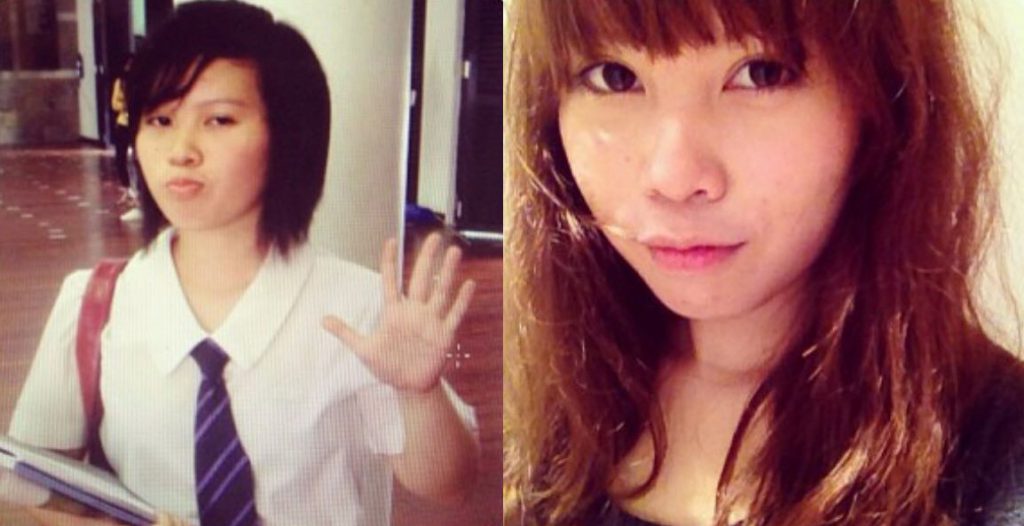 I used to avoid a lot of physical activities because I felt like everyone was scrutinising my thighs and arms if I wear sportswear or swimwear. I don't think anyone really notices about these things but I can’t help thinking that they're judging me for being fat.
When I was around 18, I would work out almost every day and eventually lost 10kg. It was a painful process, but I'm glad that it happened.
Although I’m not as fat as I was previously, I still feel it (body insecurity) and am very afraid of putting on any weight, but I am definitely more confident than before.
I can definitely see myself ageing (skin not as bright or taut and crown of hair not as thick) at my current age too. But that's just part of life. More importantly, I found ways to deal with my skin problems and became bolder in experimenting with style, eventually finding the type of 'look' that suit me best.
All these adds up and really changed the way I carried myself. People always say that it's the inside that should count but you can't deny that a good hair day or a nice outfit makes you feel better about yourself. And when you do, you're braver to try new stuff or engage yourself with people you've always felt intimidated by. And this has opened doors for me in many ways.
– Mel, 28
I used to avoid a lot of physical activities because I felt like everyone was scrutinising my thighs and arms if I wear sportswear or swimwear. I don't think anyone really notices about these things but I can’t help thinking that they're judging me for being fat.
When I was around 18, I would work out almost every day and eventually lost 10kg. It was a painful process, but I'm glad that it happened.
Although I’m not as fat as I was previously, I still feel it (body insecurity) and am very afraid of putting on any weight, but I am definitely more confident than before.
I can definitely see myself ageing (skin not as bright or taut and crown of hair not as thick) at my current age too. But that's just part of life. More importantly, I found ways to deal with my skin problems and became bolder in experimenting with style, eventually finding the type of 'look' that suit me best.
All these adds up and really changed the way I carried myself. People always say that it's the inside that should count but you can't deny that a good hair day or a nice outfit makes you feel better about yourself. And when you do, you're braver to try new stuff or engage yourself with people you've always felt intimidated by. And this has opened doors for me in many ways.
– Mel, 28
4. Denying Insecurity From Power

5. Handling Situations With More Maturity
 I was picked on by seniors in secondary school because of my small frame. They would cut my queue during recess or do other mean things. Besides that, being physically unfit meant passing NAFA was a chore.
I started bulking up. And I started keeping facial hair as it makes me look fierce. It’s a good deterrence when I want to do my own things without people disturbing me, like when I'm trying to avoid an insurance agent waiting at the foot of an escalator. But partially also because I got too busy and lazy to shave during submission period in university.
If I can go back in time, I’d punch the younger me for being a little wuss. I’ve learnt to be tougher, more disciplined, and more focused on what I want to achieve in life. Religion and supportive friends helped, but it was all the experiences I’ve gone through that made me more able to handle situations more maturely now.
– Janielson, 26
I was picked on by seniors in secondary school because of my small frame. They would cut my queue during recess or do other mean things. Besides that, being physically unfit meant passing NAFA was a chore.
I started bulking up. And I started keeping facial hair as it makes me look fierce. It’s a good deterrence when I want to do my own things without people disturbing me, like when I'm trying to avoid an insurance agent waiting at the foot of an escalator. But partially also because I got too busy and lazy to shave during submission period in university.
If I can go back in time, I’d punch the younger me for being a little wuss. I’ve learnt to be tougher, more disciplined, and more focused on what I want to achieve in life. Religion and supportive friends helped, but it was all the experiences I’ve gone through that made me more able to handle situations more maturely now.
– Janielson, 26
6. Your Thoughts Are Your Choice
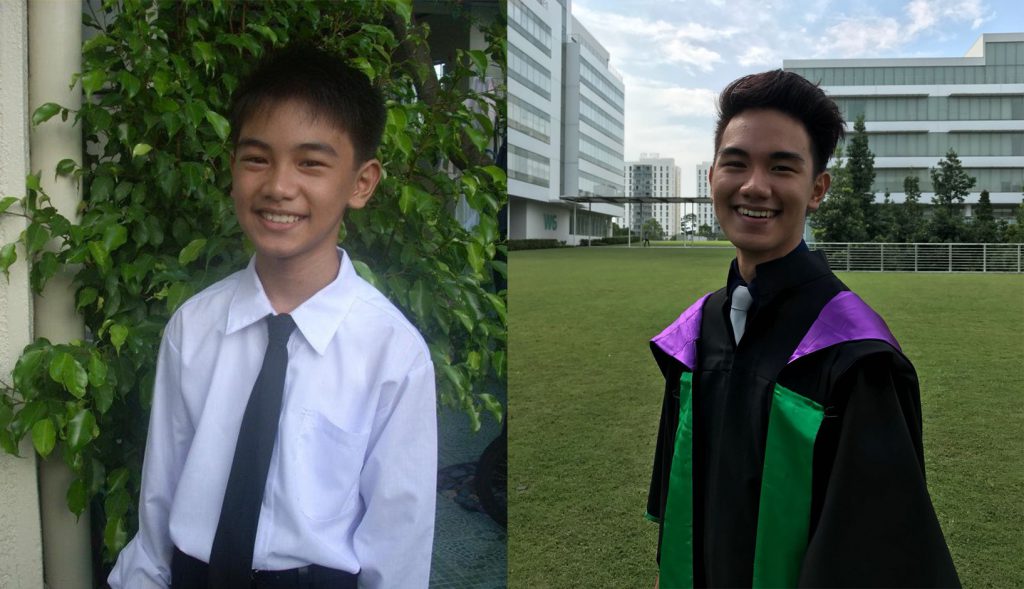 My high metabolism makes it really hard for me to gain weight since young and I’d always look skinny and fragile. People would point out how skinny I am whenever I wore shorts and that made me feel even more self-conscious, which affected the way I behaved. I was very shy and would hide my true self in social situations because I didn’t want people to think bad about me.
I eventually met people whom made me feel comfortable being my authentic, quirky and playful self.
It’s your choice whether you want to accept people’s comments and learn from them or carry those negative thoughts with you. I choose to look at the positive side of things.
– Raymond, 21
My high metabolism makes it really hard for me to gain weight since young and I’d always look skinny and fragile. People would point out how skinny I am whenever I wore shorts and that made me feel even more self-conscious, which affected the way I behaved. I was very shy and would hide my true self in social situations because I didn’t want people to think bad about me.
I eventually met people whom made me feel comfortable being my authentic, quirky and playful self.
It’s your choice whether you want to accept people’s comments and learn from them or carry those negative thoughts with you. I choose to look at the positive side of things.
– Raymond, 21
7. No Need For Constant Affirmation

8. Turning Weaknesses Into Opportunities
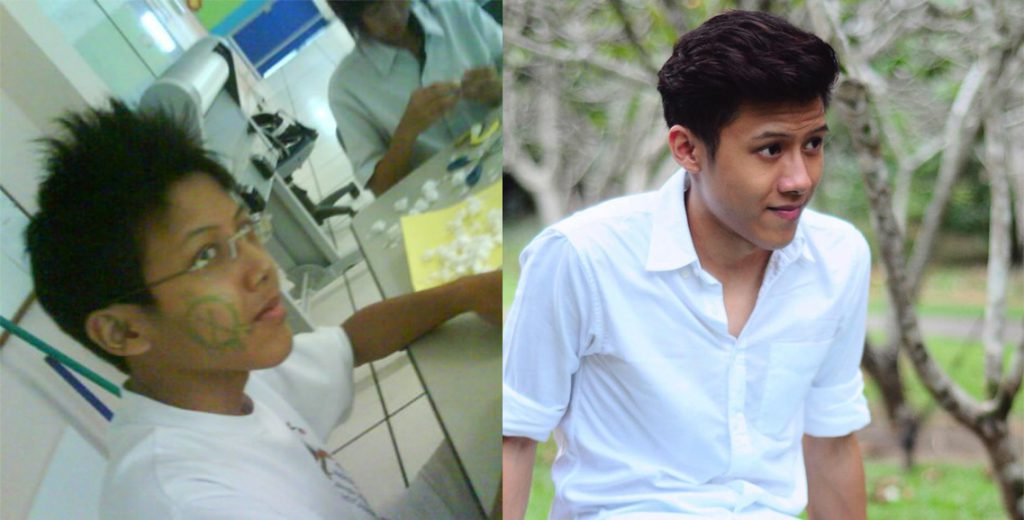 I had the whole inferiority complex where every little bit of me didn't seem good enough in my own eyes and I didn’t know how to navigate that. For example, I would feel inferior wearing glasses and felt the need to wear contacts so that I look better. And because I was always afraid of wearing contacts, I just didn't bother turning up for social gatherings at all.
I am definitely more confident now and care less about what others think of me. It's a much easier life to live. I'd still wear contacts when I want to impress girls or on dates but it's more about boosting my self-confidence than finding a way to feel 'sufficient'.
I have other insecurities like having white hair, but I see it as an opportunity to just play with my hair: toss in different colours to make the most out of a perceived weakness. So, it’s a matter of loving yourself and embracing every little bit of your ‘flaws’.
– Andrew, 26
I had the whole inferiority complex where every little bit of me didn't seem good enough in my own eyes and I didn’t know how to navigate that. For example, I would feel inferior wearing glasses and felt the need to wear contacts so that I look better. And because I was always afraid of wearing contacts, I just didn't bother turning up for social gatherings at all.
I am definitely more confident now and care less about what others think of me. It's a much easier life to live. I'd still wear contacts when I want to impress girls or on dates but it's more about boosting my self-confidence than finding a way to feel 'sufficient'.
I have other insecurities like having white hair, but I see it as an opportunity to just play with my hair: toss in different colours to make the most out of a perceived weakness. So, it’s a matter of loving yourself and embracing every little bit of your ‘flaws’.
– Andrew, 26

